Last updated: 17 January 2020.
Here is our most comprehensive TOKYO TRAVEL GUIDE BLOG with sample Tokyo itineraries, breakdown of expenses, list of things to do, tour and hotel recommendations, and other useful tips!
Over the past six years, I had set foot in Tokyo six times, each lasting as long as my visa allowed. That alone should tell you just how much I adore the Japanese capital. I’m not even sure why. You know how you grew up building on your mind a list of qualities you want your THE ONE to possess? Then you meet someone who doesn’t meet any of those requirements, but for some strange reason, you know they’re the one for you. To me, that’s Tokyo.
Any attempt to search for reason leaves me nauseated. The things that I would normally hate in any other city are things I love about Tokyo. I dislike big urban capitals; Tokyo is a humongous urban capital. I abhor big crowds; Tokyo is overcrowded. I despise too many rules; Tokyo has many unwritten codes that locals and guests are expected to abide by. Yet, with each visit I find myself falling deeper and deeper even though she’s confusing af. She’s zen but wacky, chaotic but organized, minimalist but vibrant, traditional but futuristic, efficient but absolutely insane.
UNDERSTANDING TOKYO
We often think of Tokyo as a single city, but it’s actually a lot more complicated than that. It’s a metropolitan prefecture. (Wait, what? Uhm, let me explain.) It’s not a single city but not your usual Japanese prefecture either. It’s something that is unique to Tokyo. Think of it as a cluster of cities, municipalities, and special wards. It’s vast and dense. Together, it is the most populous metropolitan area in the world, with over 37 million residents.
But let’s focus on one area in particular — the 23 special wards. What many refer to as Tokyo is actually what used to be Tokyo City, which is now broken down into 23 Special Wards, each operating as an individual city. (If you’re familiar with Metro Manila, it’s a similar concept. What we call Metro Manila is actually composed of separate, independent cities.) There’s a big chance that most of the attractions you want to see are confined within the collective boundaries of these 23 special wards.
The good news is, if you’re in Tokyo for only a short visit, you wouldn’t even feel the division. All 23 special wards seem to function as one giant urban hub, connected by the most impressive transportation system I have ever seen in my life.
Here are a few more facts you need to know:
- Time Zone: UTC+9 (Japan Standard Time). Japan is one hour ahead of the Philippines and Singapore
- Language: Japanese (Nihongo). English isn’t widely spoken. However, most signs have English translations.
- Currency: Japanese Yen (JPY, ¥). JPY 1000 is roughly USD9, EUR8.15, SGD12.23, PHP 462 (as of January 2020).
- Modes of payment: Many establishments accept credit cards, but most still prefer cash.
WHERE TO STAY IN TOKYO
Hmmm, tough question. Before I answer that, let me first explain to you the JR Yamanote Line. (I’ll answer this, I promise. Just bear with me.)
The JR Yamanote Line is a train loop that runs around Tokyo, connecting the city’s key areas including Ueno, Shinjuku, Shibuya and Shinagawa. It also marks the boundary of Central Tokyo. The area within the loop is considered Central Tokyo.
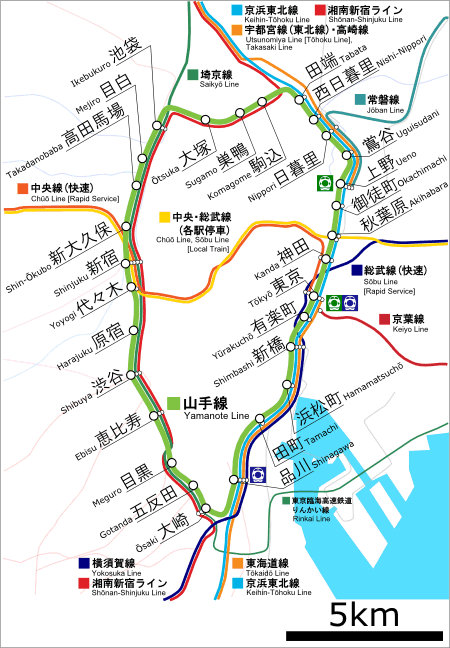
It is important to be familiar with this because most key attractions in Tokyo are situated along this loop. If it’s your first time, you’ll probably want to see the Shibuya Crossing, Harajuku, Shinjuku, Imperial Palace, Ueno, and Akihabara. All of these are connected by the JR Yamanote line. It’s something to take into consideration when choosing a place to stay.
Best Area to Stay in Tokyo
The truth is, as long as the hotel you choose is near a station, you should be fine because most tourist spots are accessible by train/subway. But when it comes to convenience, some areas are far better than others in terms of accessibility and number of accommodations.
Most online sources recommend three locations: Shinjuku, Shibuya, and the Tokyo Station area. I agree with these recommendations. They’re all close to Yamanote Line and direct airport bus services. There are also numerous shops and restaurants around.
However, I prefer Ueno for a lot of personal reasons.
- Ueno is only 40-70 minutes away from the airport by train (via Keisei as mentioned above). It is important to me because I dislike switching trains and walking long distances when I have 30 kilos of baggage on my shoulders.
- Ueno is also closer to Akihabara than any of the three other locations. Akihabara is my absolute favorite place in Tokyo.
- Ueno harbors a number of budget hotel chains including Hotel Mystays, which I frequent.
Even my sister and another friend who both used to live in Tokyo recommend Ueno. But that’s just us.
If the overall vibe is important to you, Asakusa and Akihabara are neighborhoods to consider too. Akihabara is great for otaku and gadget-happy tourists.
Asakusa, on the other hand, may not be along Yamanote Line and it’s not a shopping district, but it has an Old Tokyo feel around it that you might appreciate. Staying here also means you’re close to Senso-ji (Asakusa Kannon Temple).
Wherever you choose to stay, here are some budget accommodation types and usual off-peak rates:
- Bed at Capsule Hotel: as low as USD 20
- Bed at a Dormitory: as low as USD 28
- Single Room: as low as USD 55
- Twin/Double Room: as low as USD 78
Top Budget Hotels in Tokyo
Here are the top ranking budget and capsule hotels in Tokyo as scored by Agoda customers (regardless of neighborhood).

- JR-EAST HOTEL METS AKIHABARA. Check Rates & Availability! ✅
- MyCUBE by MYSTAYS Asakusa Kuramae. Check Rates & Availability! ✅
- Capsule Hotel Anshin Oyado Tokyo Akihabara. Check Rates & Availability! ✅
- GLANSIT AKIHABARA COMFORT CAPUSULE HOTEL. Check Rates & Availability! ✅
- Capsule Hotel Anshin Oyado Premier Tokyo Shinjuku Station. Check Rates & Availability! ✅
- KEIKYU EX INN Akihabara -Tokyo Akihabara. Check Rates & Availability! ✅
- Dormy Inn Premium Tokyo Kodenmacho – Nihonbashi. Check Rates & Availability! ✅
- Hotel Wing International Select Asakusa Komagata. Check Rates & Availability! ✅
Top Tokyo Hostels
Based on online scores given by Agoda customers.

- Oakhostel Sakura. Check Rates & Availability! ✅
- Citan Hostel. Check Rates & Availability! ✅
- Sheena and Ippei Guesthouse. Check Rates & Availability! ✅
- Hostel Chapter Two Tokyo. Check Rates & Availability! ✅
- BUNKA HOSTEL TOKYO. Check Rates & Availability! ✅
- WISE OWL HOSTELS TOKYO. Check Rates & Availability! ✅
Search for more: Tokyo Hotels
POCKET WIFI & LOCAL SIM IN TOKYO
There are a lot of FREE wi-fi spots throughout Tokyo, but if you want to stay connected 24/7, you can rent a mobile wi-fi or get a local 4G SIM.
Pocket Wifi Rental can accommodate multiple users so if you’re a group, you just need one and split the cost. You’ll find a lot of them around, even at the airport. However, based on experience, they are so in demand that every time I try to get one, there’s always none left. Fortunately, you can reserve one online and just pick it up at the airport!
If you opt with a 4G Data SIM, you can choose between unlimited 4G data and 3GB data for 8 days. If you’re a heavy data user, best to go with the Unlimited Plan. You can pick up the SIM card at Narita Airport.
HOW TO GET TO TOKYO
Tokyo is one of the most visited cities in the world, so accessibility isn’t an issue. In fact, it is served by two airports: Narita, for international flights, and Haneda, for domestic flights mostly.
Located 70km from the city center, Narita Airport is farther from the city than Haneda. Narita Airport has 3 terminals and has more transfer options. Here are your cheapest bets:
Narita Airport to Tokyo by Bus
Keisei Bus transfer passengers from Narita Airport to Tokyo Station. If your hotel is near Tokyo Station or any of its very few stops, good for you. If not, you might still need to take the train.
Here are the rates:
Regular Hours (5am-12mn)
Adult: ¥900 if you reserve in advance, ¥1000 if you book at the airport
Child: ¥500
Late Night/Early Morning (12mn-5am)
Adult: ¥900 if you reserve, ¥2000 if you book at the airport
Child: ¥500 if you reserve, ¥1000 if you book at the airpot
To book in advance, visit the Keisei Bus website and click on the ENGLISH tab in the upper right corner. On the next page, click on TOKYO SHUTTLE. Follow the steps detailed on the next page.
If you’re more comfortable booking online instead, you’ll find bus services from Narita Airport Terminal 1 or 2 to Tokyo City Air Terminal or Tokyo Station.
Narita Airport to Tokyo by Train
Only Terminals 1 and 2 have their own train station. If you’re landing at Terminal 3, you need to make your way on foot to Terminal 2. You just need to follow the signs. Plenty of ’em around.
The cheapest train option is the Keisei Main Line Limited Express. Depending on where your hotel is located, your route will change and you might need to make a few train switches. To check, visit the Hyperdia website and enter the train station closest to your hotel.
Assuming your hotel is in Ueno, this is how much this train will take you to Keisei-Ueno Station.
Fare: ¥1030 for adult (¥520, child)
Travel time: 70 minutes
Seat: Free seating
Do not confuse this with the Keisei SKYLINER, for which seats are paid and reservations are mandatory. The great thing about the Skyliner though is that it can take you to the city in almost half the time (but for double the price).
Fare: ¥1240
Reserved Seat: ¥1230 (additional fee)
Travel time: 40 minutes (to Ueno)
✅ RESERVE A SKYLINER TICKET HERE!
More transfer options: To Shinjuku, Tokyo Station and Ueno
HOW TO GET AROUND TOKYO
Taxis are expensive, and buses can be confusing for first-timers. The train is the most efficient mode of transportation. Tokyo has an expansive railway system. Wherever it is you’re going, there is most likely a train station very close to it.
Tokyo by train can be a bit overwhelming at first, but it’s easy once you get the hang of it. First, bear in mind that the network is used by almost a dozen operators, including those serving the suburbs. However, in this article, let’s focus on the three companies that serve Central Tokyo: JR East, Toei Subway, and Tokyo Metro Subway. Each of them operate multiple lines that get so entangled, it’s amazing how the Japanese make it work.
JR East controls the all-important JR Yamanote Line. Expectedly, this line is used by a good fraction of the population (which is me saying that it’s often crowded, hehe). Aside from Yamanote, JR also runs other lines including Chuo Main, Chuo-Sobu, and the Shinkansen (bullet train).
The subway lines are operated by Tokyo Metro and Toei. Although separate companies, these two are in great synergy. Often, you don’t need to exit the gates and buy new tickets even if you switch from Toei to Metro lines. (There are cases when you do, though.) Subway lines are marked with an assigned letter in a color-coded circle. For example, Shinjuku Line’s mark is an S in a leaf green circle. Mita Line’s mark is a the letter I in a blue circle. Remember these marks and the companies’ logos because this is how you’ll find them.
Tokyo Metro Subway Lines
Toei Subway Lines
You might be thinking, “Oh cool. That looks easy.” Wrong. It seems easy to understand now, but if you’re a Tokyo newbie, it’s a lot more difficult in practice. These lines are so entangled, and when they meet in major stations like Shinkuku or Tokyo, things get even more complicated. Even I, who have been to Tokyo four times, and my sister, who has been living in Tokyo for years, sometimes get awfully lost.
Aside from the lines, you also might need to know the different train types:
- Local Trains are those that stop at every single station of the line. EVERY. SINGLE. STATION. If your stop is 20+ stations away, it can take a lot of time.
- Rapid Trains are those that skip some stations. Same price as local trains. Same platforms, too.
- Express Trains skip even more stations.
- Limited Express stop only at major stations. Additional fee is usually required.
If it entails waiting only a few minutes on the platform, I would usually just choose a rapid or express train even when the a local train is already approaching. WARNING, though: Board the non-local trains only if you’re sure it will make a stop at your station. You don’t wanna skip your stop. True story. Hahaha.
How to Travel By Train using Single Tickets
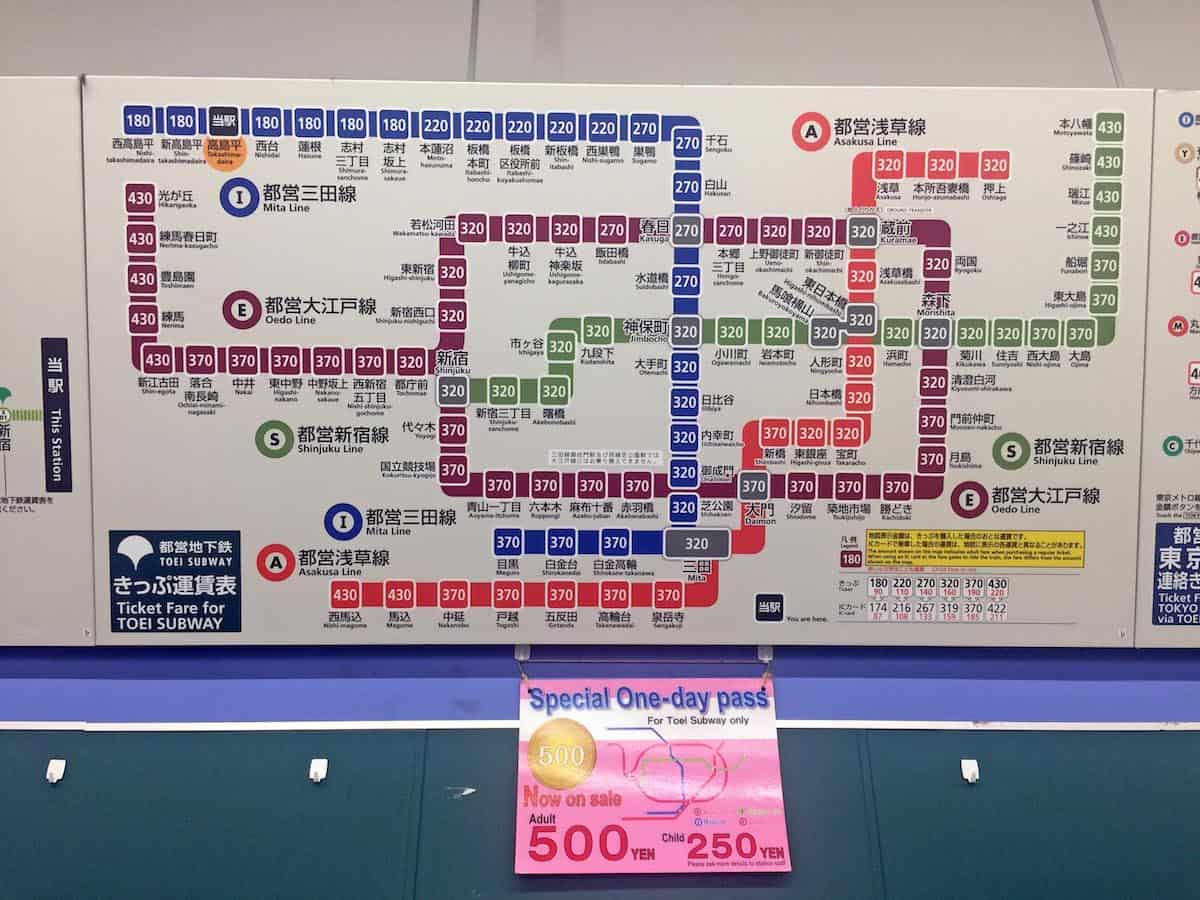
- On your web browser, go to Hyperdia.com/en/. Enter your origin and the station where you’re going. It will then display possible route options including how much the ride costs and transfers needed to get there. At the train station, you can double check the price. Just look at the route map, usually above the ticket machines. The map displays the price based on distance. Sometimes, the map is in Japanese characters only, which is why Hyperdia is useful.
- Once you know how much you’re gonna pay, approach the ticket machines. By default, these machines display everything in Japanese characters. But there is a button there that reads ENGLISH. Press that button and you will hear a voice saying “All train information will be displayed in English.” (I said it out loud in the right intonation when I typed that. Totoo.)
- Follow the steps onscreen. Usually, you will need to press the button (next to the screen) that displays how many passengers you are and then press the corresponding price on the screen. Yep, you should know how much you should be paying before using these machines, hence the first two steps. It will then ask you to confirm your booking.
- Get the tickets that the machine will release. (If after getting the ticket you realize you made a mistake or you just change your mind, don’t worry. Just use the same ticket. Fare adjustment machines are installed at every station. Make the adjustment at the destination.)
- Feed your ticket to the ticket slots at the gate. It will emerge at the end of the gate. Pick it up again. The ticket is small so try your best not to lose it.
- Go to the right platform. To check if you’re in the right direction, check the list of stations usually displayed on a wall before the platforms. There is also a more detailed timetable in the middle of the platform.
- Wait for the right train. The estimated time of arrival of the next few trains and the train type (Rapid, Local, etc) are displayed on electronic screens above the platform.
That’s it! If you get lost or you encounter any problem, don’t hesitate to approach the staff at the window. Every station has one.
Also, if you’re an adult, don’t even try getting a ticket meant for kids just to get a discount. Children’s tickets make a distinct birdy sound when used at the gates to let the staff know that it’s really being used by kids. Yep, birdy.
How to Buy and Use Suica or Pasmo Card
Prepaid IC Cards are also available. It seldom offers discounts, but the beauty of it is that you don’t need to get a ticket each time you’re using the train. You just need to quickly hover the card over the reader and you’re through.
What’s the difference between Suica and Pasmo? The companies offering it, mainly. Suica is sold by JR while Pasmo by Toei and Tokyo Metro. However, both cards work in any Tokyo Metro, Toei, or JR line. As far as the user experience is concerned, it’s very similar.
To get one, you just need to approach one of the PASMO or SUICA machines at the station. There’s no use for me to enumerate the steps here because it’s so easy. Just choose ENGLISH on the welcome screen and follow the instructions.
These cards can also be used on buses. An increasing number of shops and other establishments are also accepting these cards as mode of payment. You can even use it to buy drinks or snacks from vending machines.
Tokyo Passes
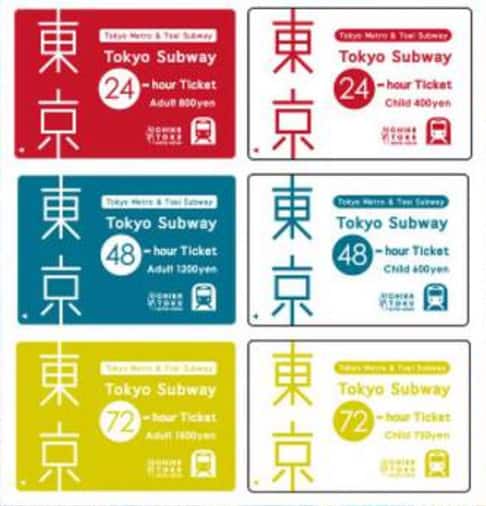
But if you only have a very limited time in Tokyo and your itinerary is super packed, then go ahead. There are a lot of options. But one of the most convenient is the Tokyo Subway Ticket.
Tokyo Subway Ticket grants you unlimited access to all subway lines (Toei and Tokyo metro, NOT JR). Cost: ¥800 for 24 hours, ¥1200 for 48 hours, and ¥1500 for 72 hours. Available for pickup at Narita and Haneda airport.
✅ GET A TOKYO SUBWAY TICKET HERE!
THINGS TO DO IN TOKYO
Tokyo is bursting with attractions. There’s no running out of things to do. Like I said, I have been to Tokyo 6 times, but I haven’t been to even half of all the spots I want to visit.
The list below contains some of the city’s key highlights. I also indicated the nearest train station for your reference. I also provided links for those who want to book tickets in advance online.
I will be making a separate post with more options.
Tokyo Disneyland and Disney Sea
Nearest Station: JR Maihama Station (Keiyo Line)
This resort complex comprises Tokyo Disneyland and Tokyo DisneySea.
We have created a separate article about these, with details on how to get there, ticket prices, etc.
More info here: Tokyo Disney Resort Guide
Tokyo SkyTree
At 634 meters, this is Japan’s tallest structure, offering a panoramic view of the megalopolis. The entrance to the tower is on the fourth level of SkyTree Town. The place is usually packed. If you didn’t make advance reservations, approach the staff by the entrance and they will usually assign a time slot. Sometimes, you’re in for a long wait. We went there at 3pm and was assigned a 5pm slot. Fast tickets are available but they’re double the regular price.
Admission Fee: First observatory, 2060 yen; Second observatory: additional 1030 yen
Nearest Stations: Tokyo SkyTree Station, Oshiage
You can make an advance reservation online. Thera are offers of SkyTree observatory ticket with Asakusa Tour, which will take you to Sensoji Temple and other attractions in Asakusa area!
teamLab Planets and teamLab Borderless are two digital art museums that tickle your senses. Both are body immersive so you can actually interact with the installations! I haven’t been to Borderless, but I have visited and thoroughly enjoyed the Planets site.
teamLab PLANETS
Nearest Subway Station: Toyosu (Tokyo Metro Yurakucho Line)
Admission fee: ¥3200
✅ RESERVE A TICKET HERE!
teamLab BORDERLESS
Nearest Subway Station: Aomi (Yurikamome Line), Tokyo Teleport (Rinkai Line)
Admission fee: ¥3200
✅ RESERVE A TICKET HERE!
Ghibli Museum
Nearest Station: Mitaka (JR Chuo Main Line)
It showcases the work of Studio Ghibli, the Japanese animation studio that produced unforgettable movies like Spirited Away and My Neighbor Totoro and was co-founded by Hayao Miyazaki.
Because of its massive popularity and limited number of visitors per day, it’s incredibly difficult to snag a ticket so you need to book in advance. They don’t sell tickets at the museum Book here.
Admission Fee: ¥1000 adult, ¥700 for ages 13-18, ¥400 for ages 7-12, ¥100 for ages 4-6, FREE for under 4yo
If there is nothing available on your date, you can try looking online. The price is higher, but you might still want to consider.
Sensō-ji (Asakusa Temple)
Tokyo’s oldest temple, it was built in 645 as a tribute to Kannon, the goddess of mercy.
Admission: FREE
Nearest Station: Asakusa
Harajuku
The Harajuku neighborhood is home to some of the most iconic landmarks in the city including:
- Meiji Shrine. A Shinto shrine completed in 1921 in honor of Emperor Meiji and Empress Shōken.
- Takeshita-dori (Takeshita Street). The epicenter of Tokyo’s teenage culture and an extremely popular shopping street flanked with boutiques and restaurants.
- Yoyogi Park. Where locals meet and socialize, play sports, dance or just hang. There are cherry blossoms here, too, but not as many as those in other parks.
Admission Fee: Entrance to all of the sites above is FREE of charge. However, the teahouse garden next to the Meiji Shrine charges ¥500 per person.
Nearest Station: Harajuku (JR Yamanote Line)
Shibuya Crossing & Hachiko
Many consider this the world’s busiest intersection. It still baffles me how an intersection became a famous tourist spot, but hey whatever floats your boat. One thing I love doing here though is watch people. Get a seat at nearby Starbucks and go for it.
And oh, the statue of Hachiko, the faithful dog, is just in front of Shibuya Station. You’ll know you’re there when you see a crowd building up for their turn to take a photo.
Admission Fee: FREE
Nearest Station: Shibuya
Ueno Park
It is surrounded by several museums including the Tokyo National Museum, the Tokyo Metropolitan Art Museum, the National Science Museum, and the National Museum for Western Art, and temples including Kaneiji Temple and Kiyomizu Kannon Temple. But Ueno Park is most popular during sakura season! The park nurtures 1000 cherry trees flanking its main pathway.
Admission Fee: The park itself is FREE, but charges apply if you enter the museums.
Nearest Station: Ueno
Akihabara
The otaku’s ultimate mecca and Tokyo’s quirkiest destination. Here you’ll find several electronic stores, manga shops and cafes, maid cafes, Gundam Cafe, and Tokyo Anime Center.
Nearest Station: Akihabara
Tokyo Kimono Rental
Wear an authentic kimono or yukata! They will also style your hair appropriately. Once you’re all set, you can explore the streets of Asakusa and go selfie-crazy! Kimono units must be returned before 4:30pm, though.
Tokyo One Piece Tower
One Piece is one of the most legendary manga/anime in the world. In Tokyo, you can get lost in its action-packed world in this one-of-a-kind amusement park. Key attractions include Luffy’s Endless Adventures, Brook’s Horror House, and the Soul Edge of Zoro. There’s also a live stage show.
Robot Restaurant
Be entertained by high-tech laser displays and high-energy robot shows! Food is not included in the rates, but if you book the first performance (4:00pm) on a Saturday or Sunday, you’ll get a JPY500 drink coupon and photo op with the Robots for FREE!
Other Attractions
- Tokyo Tower is the second tallest structure in Japan, next only to Tokyo Sky Tree. It is a communications tower that was built in 1958 and was inspired by the Eiffel Tower in Paris. Today, tourists are welcome to climb to the top observatory to enjoy magnificent views of the city.
Admission Fee to the observation decks: ¥900 yen (main deck), ¥2800 (both decks).
Nearest Stations: Onarimon Station (Toei Mita Line), Akabanebashi (Toei Oedo Line) - Imperial Palace. It remains the official residence of the Imperial Family. Located at the site where Edo Castle used to stand, the Imperial Palace sits at the center of a large park, scribbled with wide green moats and colossal stone dykes. On January 2 and December 23, the Emperor makes an appearance and greets the audience throughout the day.
Nearest Stations: Otemachi Station (Exit D2), Nijubashi-mae Station (Exit 6), or Tokyo Station (Marunouchi Central Exit). - Tsukiji Fish Market. This used to be the city’s main fish market until it was moved. But today, it remains a food destination where you can enjoy sushi or sashimi.
Admission Fee: FREE
Nearest Station: Tsukiji Shijo (Oedo Subway Line) - Odaiba. Composed of man-made islands off the coast of the city. Attractions here include a view of the iconic Rainbow Bridge, Fuji TV Building and Leisureland (with a giant arcade, haunted house, ninja illusion house, bowling alleys and more). It’s also a shopping haven with malls like DiverCity Tokyo Plaza and AquaCity, which also houses a ramen theme park on its 5th floor (offering a taste of varieties of ramen from different parts of Japan).
Nearest Station: Daiba - Tokyo Dinner Cruise. Perfect for those celebrating a special occasions! This will treat you to a full-course meal as you admire Tokyo Bay’s majestic city lights! Reserve here!
- Ryōgoku is the sumo neighborhood of Tokyo. Here stand the Kokugikan sumo stadium and Sumo Museum. The stadium is where the three Tokyo tournaments are held in January, May and September, each running for 15 days. Although limited number of same-day tickets are available, it is best too book in advance on their official website. General Admission Ticket costs: ¥2200. If there are no sumo tournament at the time of your visit, you may still check out the Sumo Museum. Open Monday to Friday, 10:00 to 16:30. Closed on weekends and national holidays.
Admission Fee: FREE
Nearest Station: Ryōgoku (JR and Toei) - Tokyo Metropolitan Goverment Building (aka Tokyo City Hall, Tōkyō Tochō) has FREE observation decks that provides one of the best vistas of the city. From you can see the Tokyo Tower and the SkyTree! This is the one I recommend because I believe that the best view of Tokyo isn’t FROM the Tokyo Tower or SkyTree but has either of these structures in the frame. You can even see Mt. Fuji on a clear day! And did I mention it’s FREE.
Nearest Station: Tocho-mae Station (Oedo Subway Line)
DAY TOURS OUTSIDE TOKYO
Outside of Tokyo but easily accessible are several destinations that may be worth your time, although a trip may set you back a few thousand yen. If you can’t visit all of these, I highly recommend to pick the best at the time of your visit. For example, I went to Lake Kawaguchi in December because I also wanted to ski on the slopes of Mt. Fuji. If I visited during summer, it would have been closed.
Anyway, here are some suggestions. I’ll be writing a separate article for each of these so I could discuss them in detail.
Mt. Fuji
Hakone offers a closer look at Mt. Fuji. Located 100km from Tokyo, it is one of the favorite day tours among foreign tourists staying in Tokyo. It is part of the Fuji-Hakone-Izu National Park, whose map is shaded with hot springs!
How to get there: From Shinjuku Station, take the train to Hakone-Yumoto Station (2 hours, ¥1190). There are faster trains that could take you there for only 85 minutes but costs ¥1190.
You can also join a group tour! The tour comes with hotel pick up and FREE unlimited wifi! It will allow you to do the following:
- Enjoy a fantastic view of Mt. Fuji
- Cruise around Lake Ashi
- Take a 50-minute ropeway up Mt. Komagatake
Lake Kawaguchi
Kawaguchiko is the second largest, the most popular, the most developed, and the most easily accessible of the Fuji Five Lakes. Located in Yamanashi, it is one hour and 20 minutes away from Tokyo’s Shinjuku Station by direct express train, and two hours by bus or local train. The town is part of the Fujisan Cultural Site, inscribed as a UNESCO World Heritage Site in 2013. From here, you can have a great view of Mt. Fuji. It is also a jump off point for Fujiten Ski Resort, one of the only two resorts on the slopes of Mt. Fuji itself.
How to get there: From Shinjuku Station, take the bus to Kawaguchiko (2 hours, ¥1700, one-way) and Tokyo Station (3 hours, ¥1700, one-way). Visit the Fujikyu Bus official website for the schedule and other details.
If you don’t want to DIY it, you can also join a group tour from Tokyo! Stops include Arakurayama Sengen Park, Oishi Park, Lake Sai Iyashi no Sato Gemba Village, and Shiraito Waterfall.
Fuji-Q Highland
This is for adrenaline junkies and kids at heart. Fuji-Q Highland is an amusement theme park at the base of Mt. Fuji. Not only do you get spectacular views of Mt. Fuji, you also get treated to thrilling rides.
Fuji-Q Highland has four crazy rollercoasters, a haunted hotel, lots of carnival games and other attractions!
A ticket will give you unlimited rides within the theme park.
Kamakura
Kamakura is often called the Kyoto of Eastern Japan because of its countless shrines, temples, and monuments including a giant bronze statue of Buddha. I also did a bit of trekking in its mountains and had my first glimpse of Mt. Fuji along the way. Kamakura was also home to the greatest samurai swordsmith named Masamune, whose descendant Tsunahiro Yamamura (Masamune XXIV) has been carrying the 700-year sword-making tradition and showcasing it at Masamune Sword and Blade Workshop, which you can visit. You may also buy souvenirs at a 100-year-old sword shop here called Sankai-do.
How to get there: From Tokyo Station, travel by train to Kamakura Station (1 hour, ¥920)
Yokohama
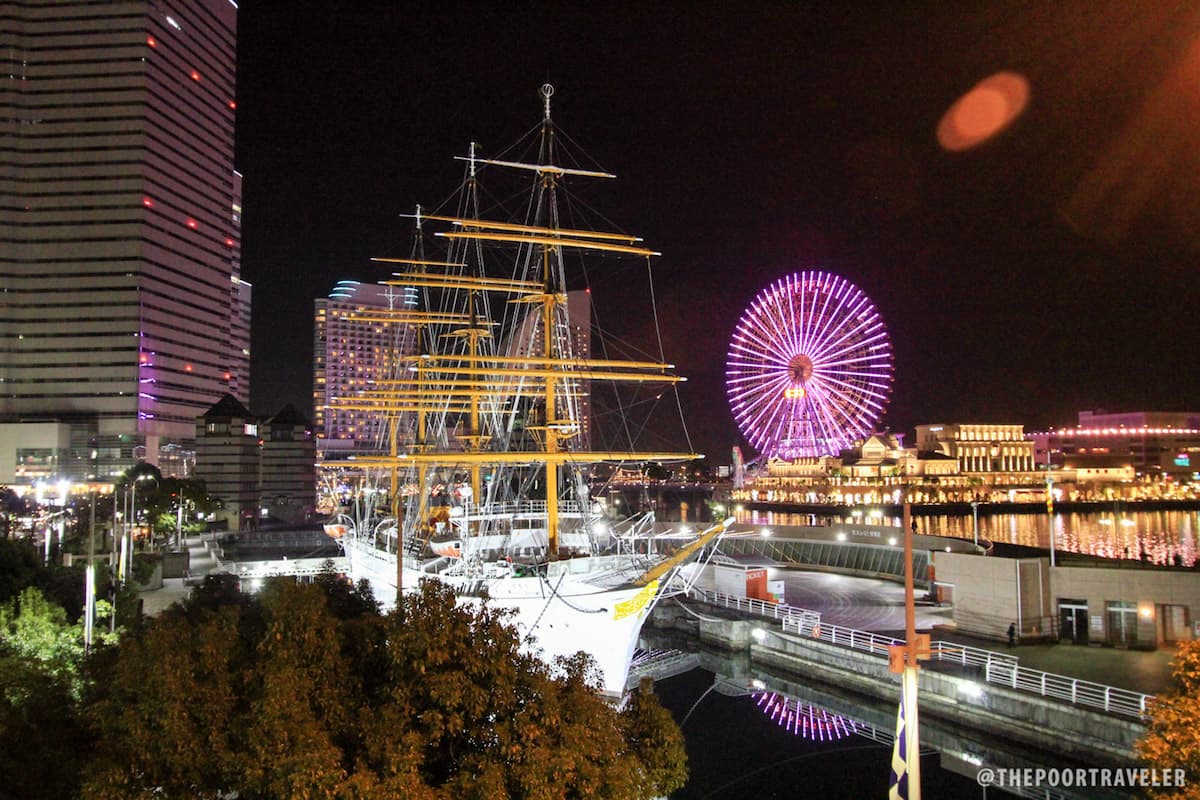
How to get there: Use the Tokyu Toyoko Line and board the Express or Limited Express train to Yokohama Station or Minato Mirai Station.
WHERE TO EAT CHEAP IN TOKYO
It is impossible to talk about Tokyo without a mention of its food. The Japanese take their food very seriously. It has more Michelin-star restaurants than any other city in the world (although most of them are pricey and require reservations months in advance).
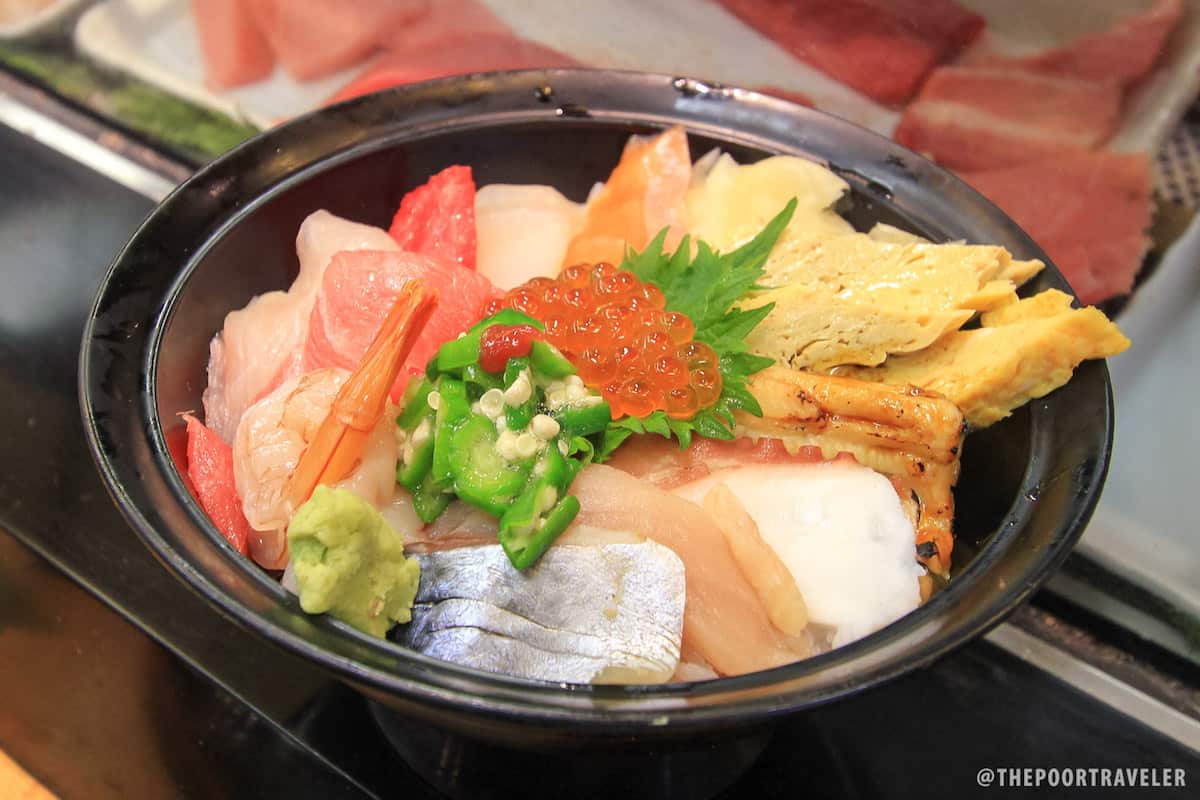
Unless you’re cooking, the easiest way to save money on food is to hit the supermarket. Japanese supermarkets sell not just raw ingredients but also cooked ones that you can simply heat or eat right away. Convenience stores serve good meals, too.
But you probably didn’t go to Tokyo just to raid their supermarkets and convenience stores (not that something’s wrong with that, if that’s your thing). Even if you’re running on limited fuel (money!), you can still eat out!
I’ll be writing a separate article listing down some of the city’s more-than-good but (relatively) affordable food places.
Please check back soon.
WHERE TO SHOP IN TOKYO
We created a separate post for this.
Read it here: 10 Places to Shop in Tokyo
SAMPLE TOKYO ITINERARY WITH BREAKDOWN OF EXPENSES
To save time, energy, and money, build your itinerary well. Visit attractions close to each other on the same day. For example, the Meiji Shrine, Harajuku, Yoyogi Park, and Shibuya Crossing area can all be explored on foot in one day.
Here’s a sample Tokyo itinerary that I think is great for a first-timer. This itinerary assumes the following:
- For breakfast, hit the convenience store for some cheap food like onigiri (rice balls with filling) or sandwich. Don’t worry, you’ll be eating at proper food places for lunch and dinner.
- For lunch or dinner, your food budget is ¥1000-¥1500 per meal. That’s actually too much. You can find ramen places that offer ¥500-800 per bowl. But let’s add some allowance. You can go over the budget, but make sure you make up for it next time.
It includes a visit to the city’s key attractions as well as a day trip to Lake Kawaguchi to admire Mt. Fuji OR Tokyo Disneyland.
Day 1: UENO & AKIHABARA
10:30 am – Airport to Tokyo, ¥1030
12:00 nn – Check-in or drop baggage
01:00 pm – Lunch at Ichiran, ¥1250
02:00 pm – Ueno Park + Tokyo National Museum, ¥620
04:30 pm – Train to Akihabara, ¥140
04:10 pm – Explore Akihabara
07:00 pm – Walk to Ameyoko Market
07:30 pm – Dinner at Ameyoko, ¥1000
09:00 pm – Back to hotel, sleep!
Day 2: SHIBUYA
08:00 am – Ueno to Harajuku Station, ¥200
08:30 am – Meiji Shrine & Yoyogi Park – FREE
11:30 am – Takeshita Dori (Harajuku) – FREE
01:00 pm – Lunch at Harajuku Gyoza Ro, ¥1000
03:00 pm – Shibuya Crossing + Hachiko + shop around
07:00 pm – Afuri Ramen, ¥1500
09:30 pm – Back to Hotel
Day 3: ASAKUSA & ODAIBA
09:00 am – Ueno to Sensoji (Asakusa) – ¥170
09:30 am – Sensoji Temple
11:30 am – Daikokuya Tempura, ¥1500
12:45 pm – Train to Aomi Station, ¥610
02:00 pm – teamLab Borderless, ¥3200
05:30 pm – Explore Odaiba
07:00 pm – Dinner, ¥1200
08:00 pm – Train to hotel, ¥480
09:00 pm – Back to hotel
Day 4 Option A: TOKYO DISNEYLAND OR DISNEYSEA
08:00 am – Ueno to Maihama Station – ¥390
08:40 am – Disney Resort Monorail – ¥260
09:00 am – Disneyland/DisneySea* – ¥7400 + ¥3000 food budget
10:00 pm – Monorail to Maihama – ¥260
10:20 pm – Maihama to Ueno – ¥390
Day 4 Option B: LAKE KAWAGUCHI
07:00 am – Wait for pickup at JR Ueno Station
07:30 am – Lake Kawaguchi Tour, ¥7680, Book here!
06:00 pm – End tour, drop off in Shinjuku
06:30 pm – Explore Shinjuku
07:30 pm – Dinner, ¥1200
09:00 pm – Train to Ueno, ¥200
09:30 pm – Back to hotel
Day 5: DEPARTURE
10:00am – Check out
11:30am – Tokyo to Narita – ¥1030
If your lodging budget is ¥4200 per person per night, the itinerary above will set you back a total of ¥47,000 (USD 427, EUR 384, SGD 574, PHP 21,720), excluding airfare, travel taxes and shopping expenses.
If you’re able to snag roundtrip airfare for only PHP 6000, the above itinerary will cost a total of PHP 29,500 (including airfare and travel tax).
The total figures above budget already include some allowance for miscellaneous incidentals but it’s best to add more to make room for price adjustments and other expenses that we might have missed.
Note that the biggest chunk of the budget goes to Disneyland or Mt. Fuji/Lake Kawaguchi. If you replace it with a cheaper destination, the total will drop significantly.
MORE TIPS FOR THE POOR TRAVELER
- Tipping is not common in Tokyo. To settle your bill, you are expected to approach the cashier on your way out. The cashier is usually stationed by the entrance/exit.
- Some restaurants and eateries have a ticket machine by the entrance. The menu is displayed and you just need to press the buttons corresponding your order and enter payment, and it will dispense your tickets.
- Many vending machines serve both cold and hot drinks. Most people are surprised to learn about the hot options. Really helpful when you’re out in the cold.
- Japanese bills look alike (same color). What varies is the size of the bill. The ¥1000 and ¥10,000 can be confusing so be careful. However, the Japanese are highly UNLIKELY to take advantage. They will even be the first to tell you.
- When using the escalator, keep left if you’re not moving.
- Be quiet inside the train. It’s seldom that you find people having loud conversations onboard. When it happens, they’re usually tourists.
- If you have a cold or cough, wear surgical masks in public. Locals wear those not because they don’t want to get sick but because they don’t want to pass on the illness to others.
- Learn a few Japanese phrases. The most useful would be Sumimasen (Excuse me, sorry) and Arigatoo gozaimasu (Thank you).
FREQUENTLY ASKED QUESTIONS ABOUT TOKYO
How to apply for a Japan visa
When is the best time to visit Tokyo
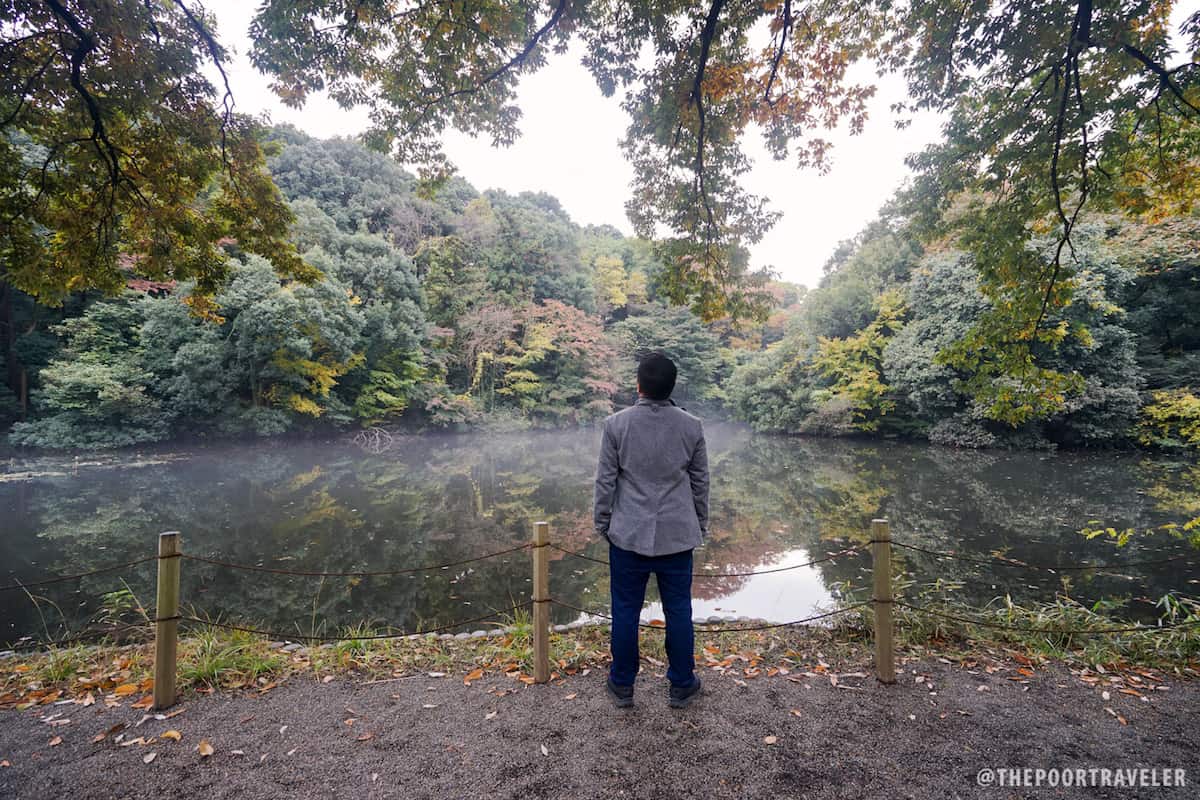
I may be biased here because I’ve lived in the tropics all my life so I always want to visit Japan when it’s a bit cooler. Summer in Japan can get too hot, even for an island guy like me.
- Spring (March-May) is the best time to visit for two reasons: The weather is often pleasant and comfortable. And if your timing is right, CHERRY BLOSSOMS! In Tokyo, the first bloom usually happens in March Week 3-4, full bloom at the end of March, and the last fall within Week 1 of April. Emphasis on usually. These days, you can never be too sure. Make sure you check Cherry Blossoms forecast before you book your flight.
- Fall (September-October) is great, too. Not too cold. I find the autumn colors to be a nice treat.
- Winter isn’t really a bad option. Tokyo winter has its market (me!), but it has its pros and cons. Flights and hotels are cheaper. Most attractions are not as crowded. Shopping districts go on NEW YEAR SALE (January Week 1), offering amazing deals. But it can get super cold outside, so you will need to prepare. Days are also shorter. If you love taking photos, it’s something you need to consider. Daylight is gone as early as 4pm. Establishments close earlier, too.
For more tips on how to enjoy Japan in winter, READ: JAPAN WINTER TIPS!
How many days is ideal for Tokyo?
At least a week. Like I said, I have been to Tokyo several times but I still have a lot to see.
If you don’t have that much time, 5 days should let you see the highlights.
If you have only 2-3 days, it’s going to be a challenge to see much of what the city has to offer. But we have a sample itinerary.
Watch the video below.
Do I need a JR Pass to explore Tokyo?
It depends on your itinerary. If you will be staying in Tokyo the entire trip, a JR Pass isn’t really worth it.
It only makes sense to get a JR Pass if you’re on a multi-city journey around Japan. If your itinerary involves taking long-distance trains often and you’re staying for 7 days, you can save money by getting a Train Pass. For example, if you would be visiting Tokyo, Osaka and Fukuoka in 7 days, it could be a great deal.
Is tipping customary in Tokyo?
No. Tipping is not common in Tokyo.
To settle your bill, you are expected to approach the cashier on your way out. The cashier is usually stationed by the entrance/exit.
What type of power plug / socket is used in Tokyo?
Electricity Info: 100V, 50-60Hz. Sockets are Type A. Plugs have two flat pins.
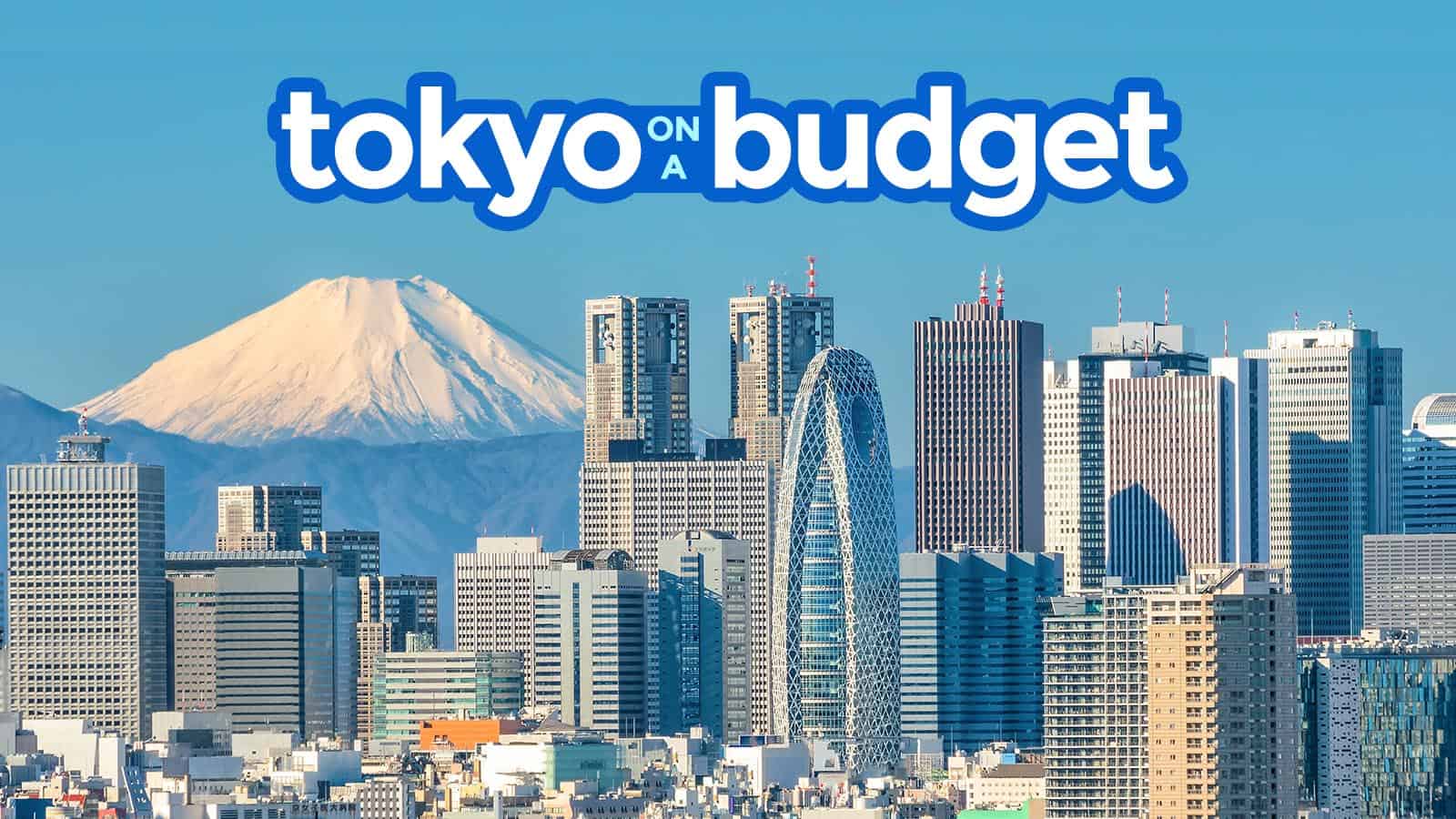
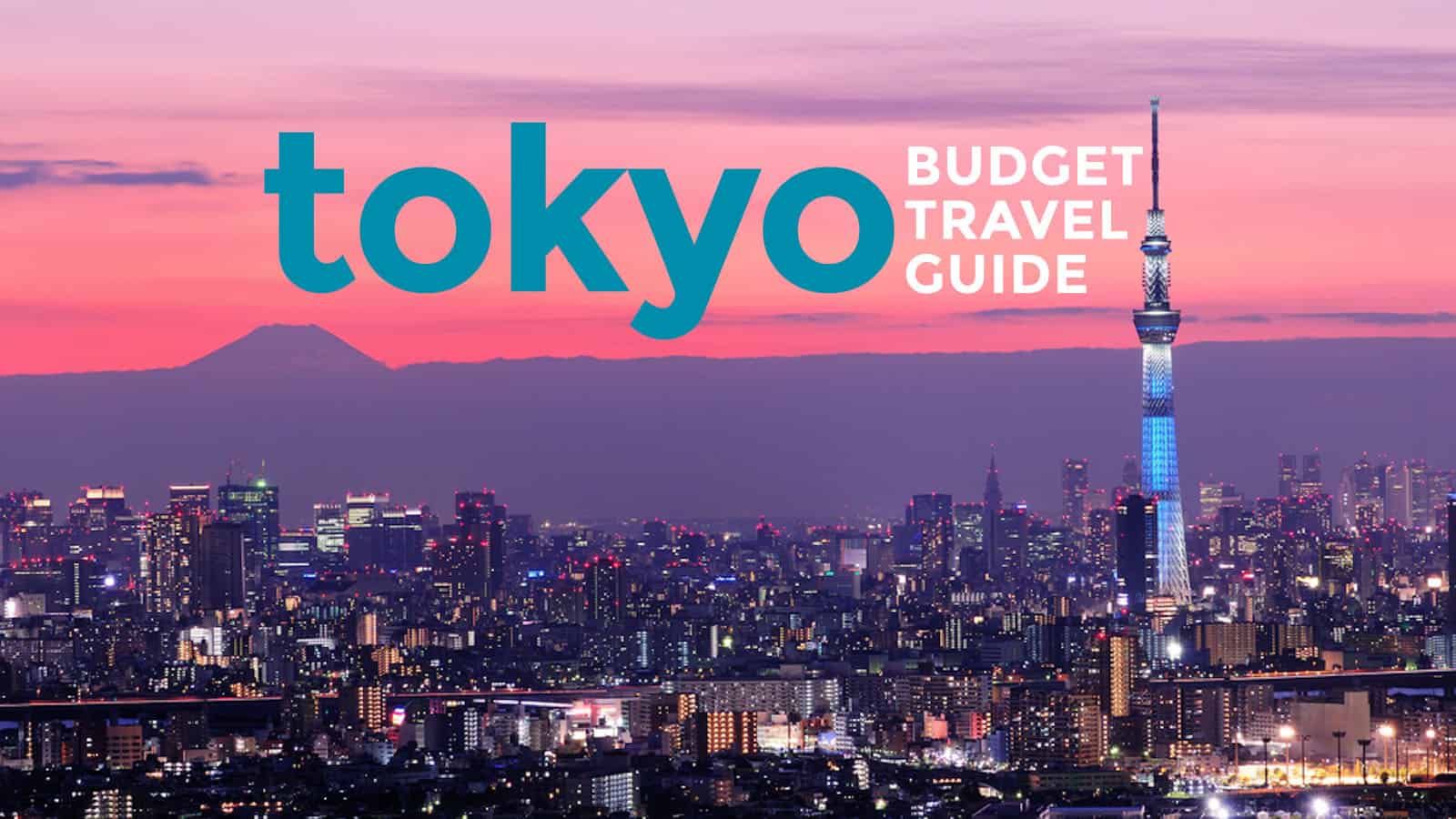
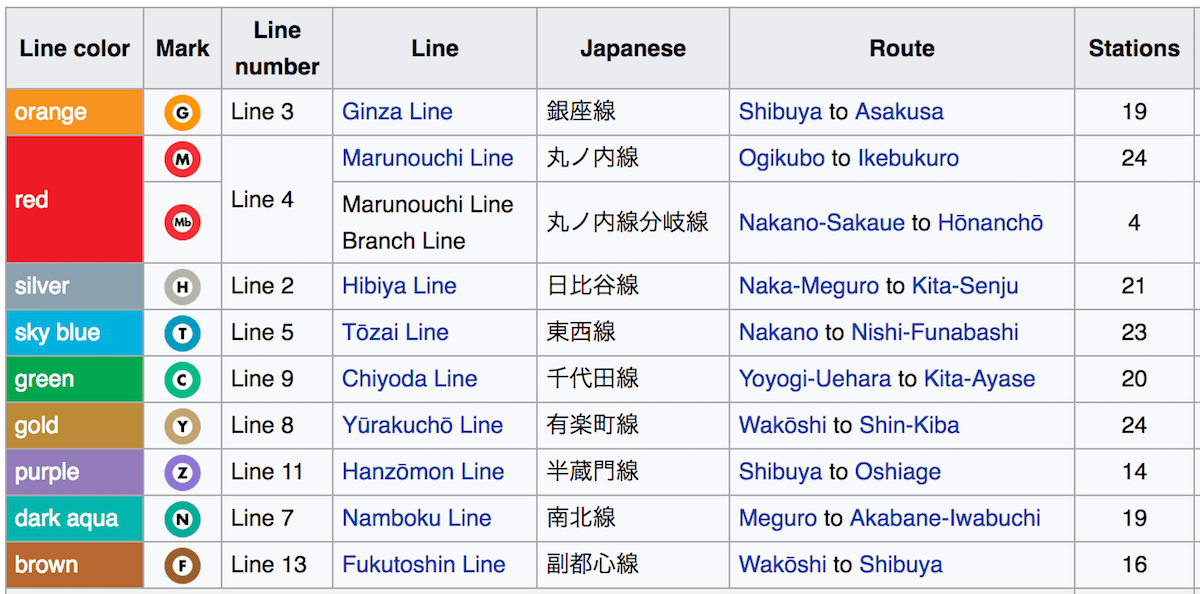

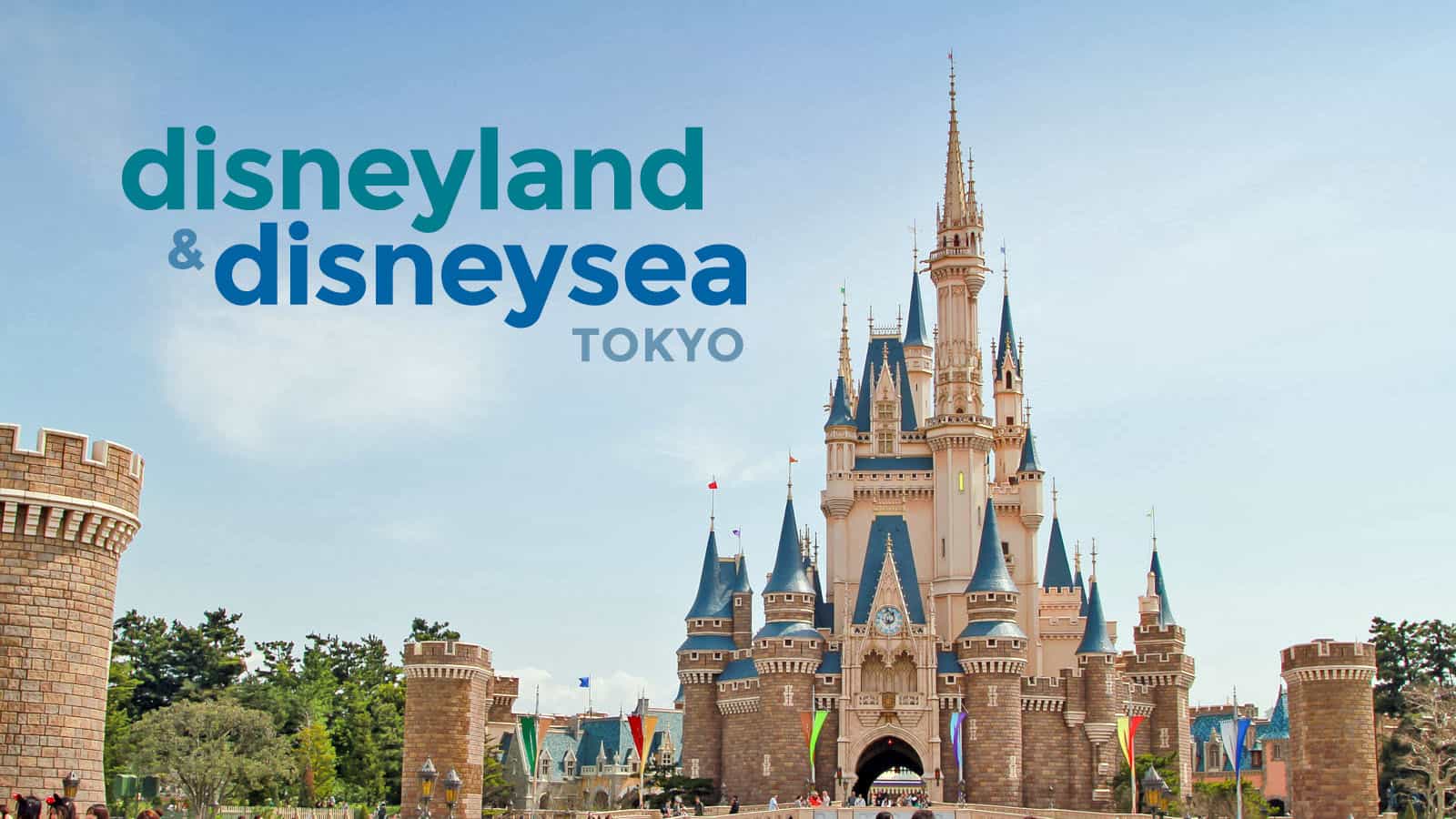
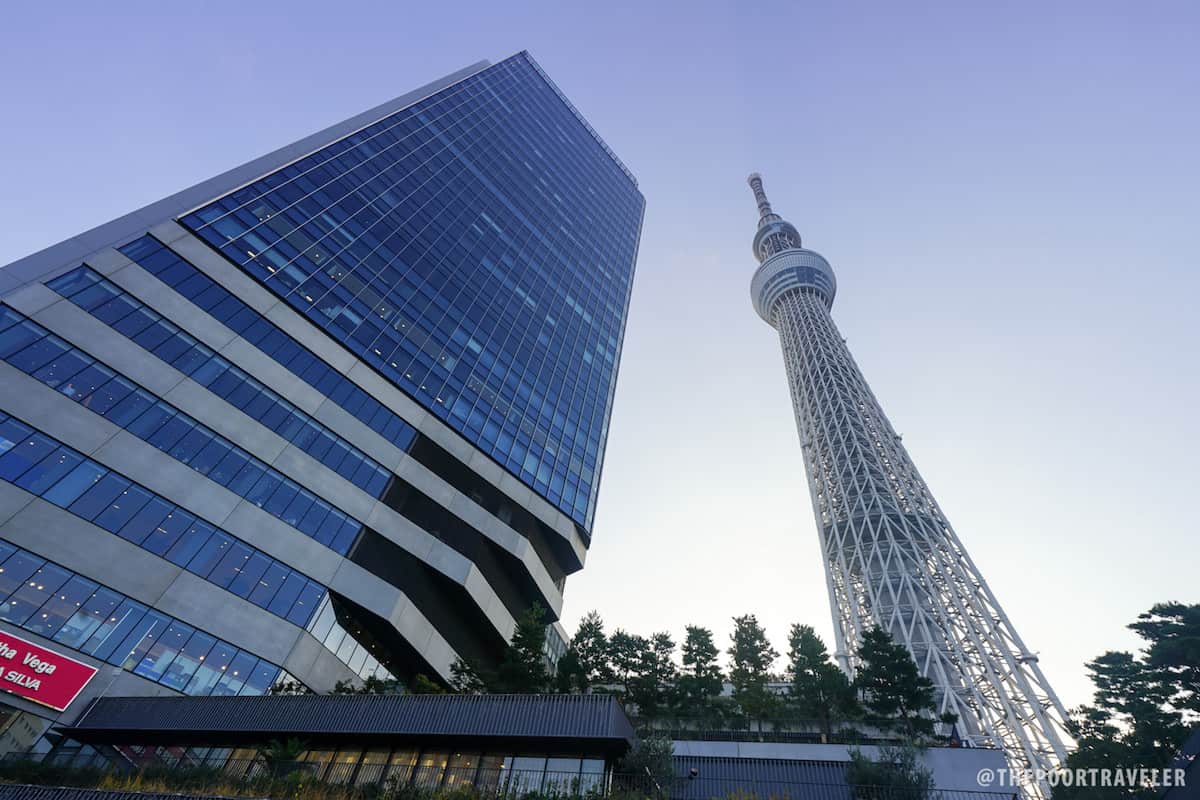
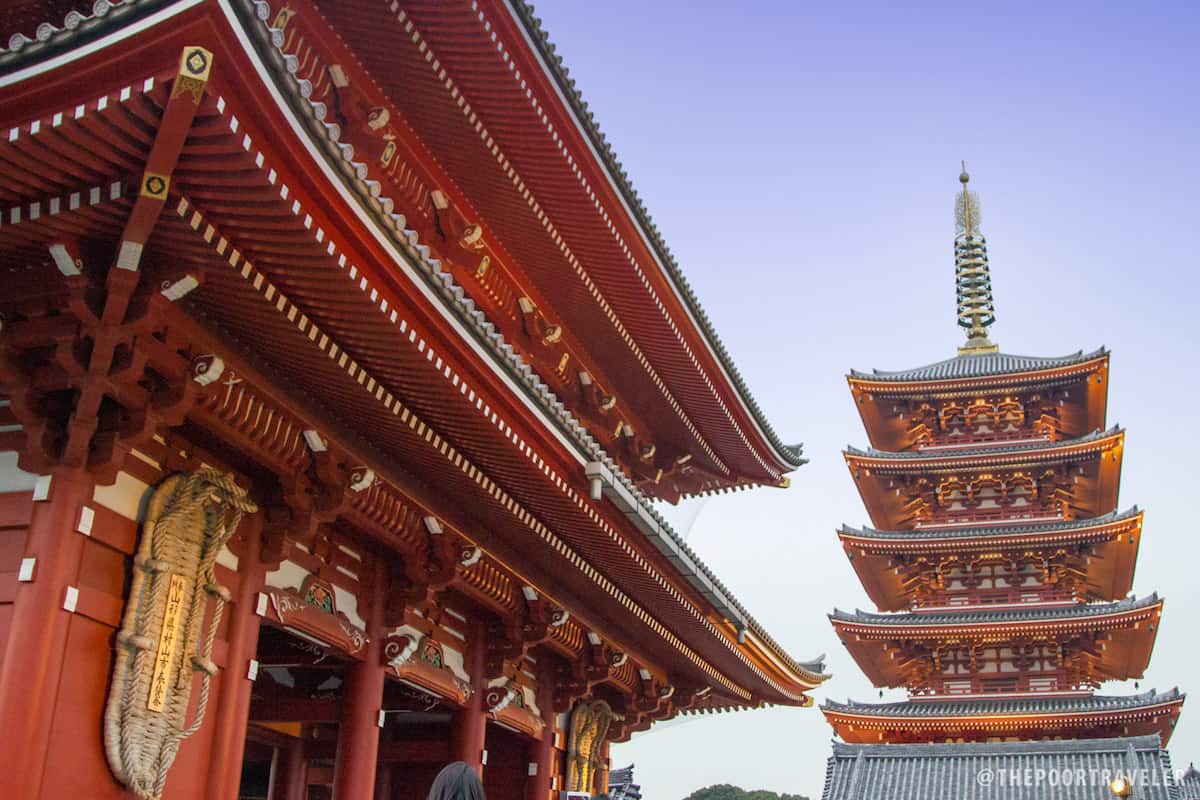
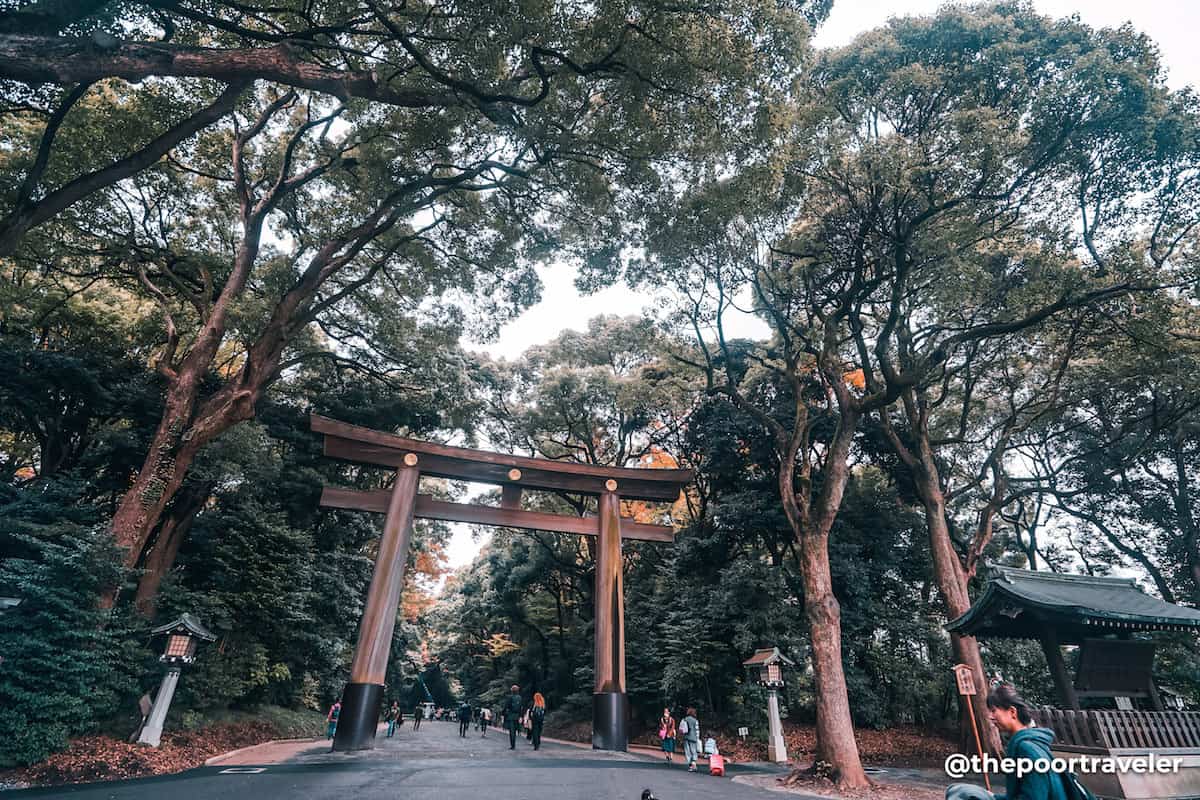
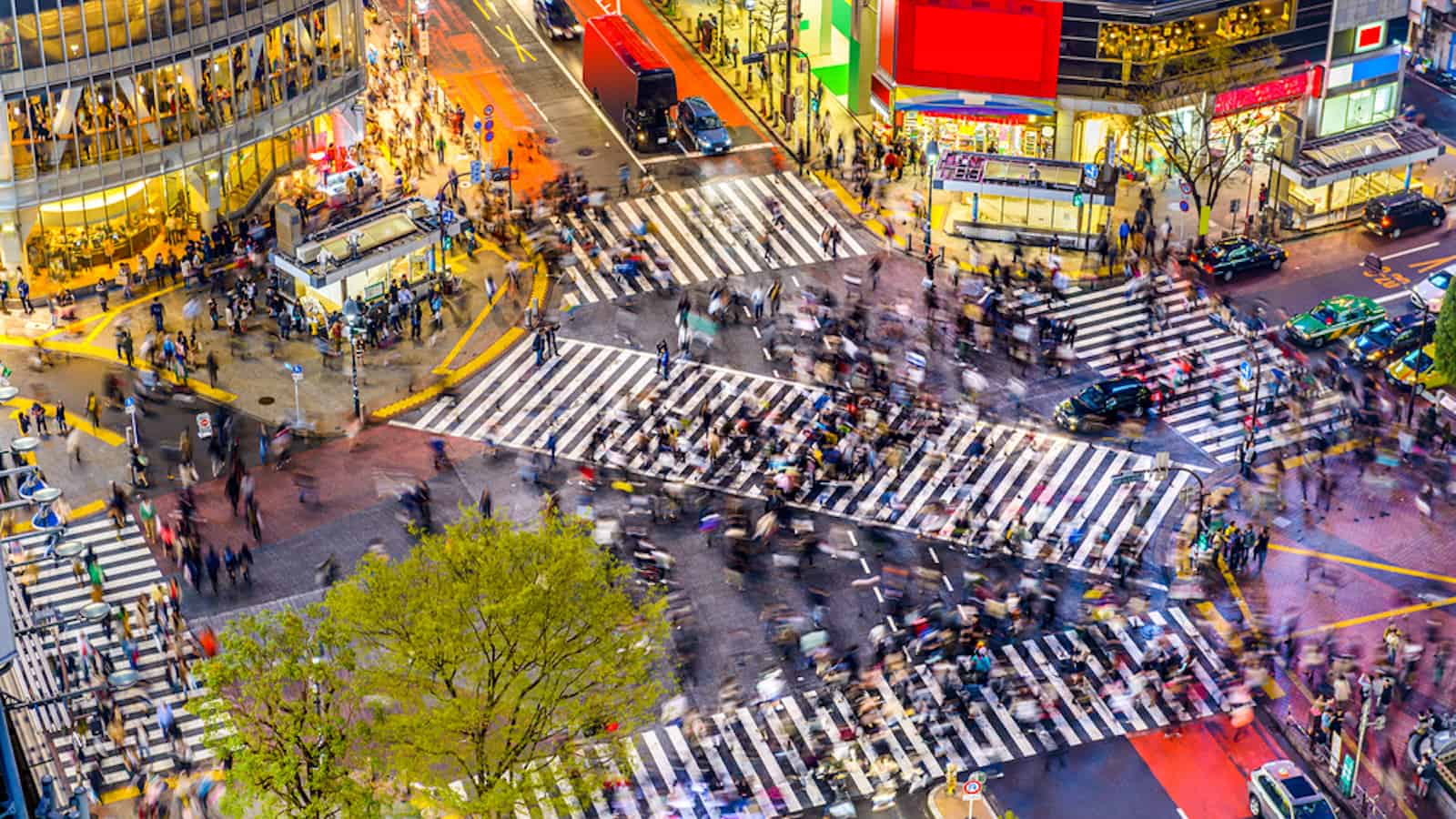
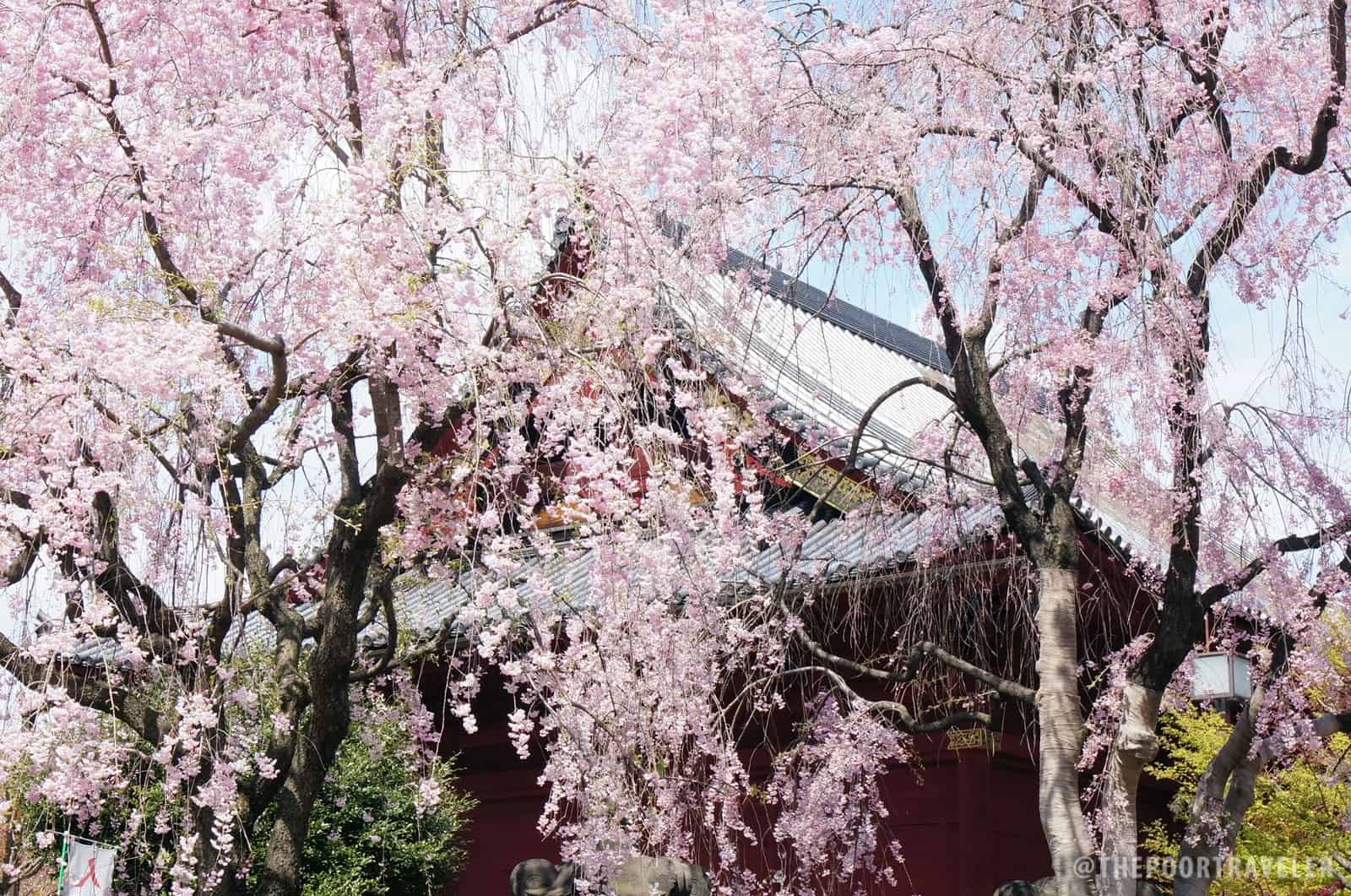
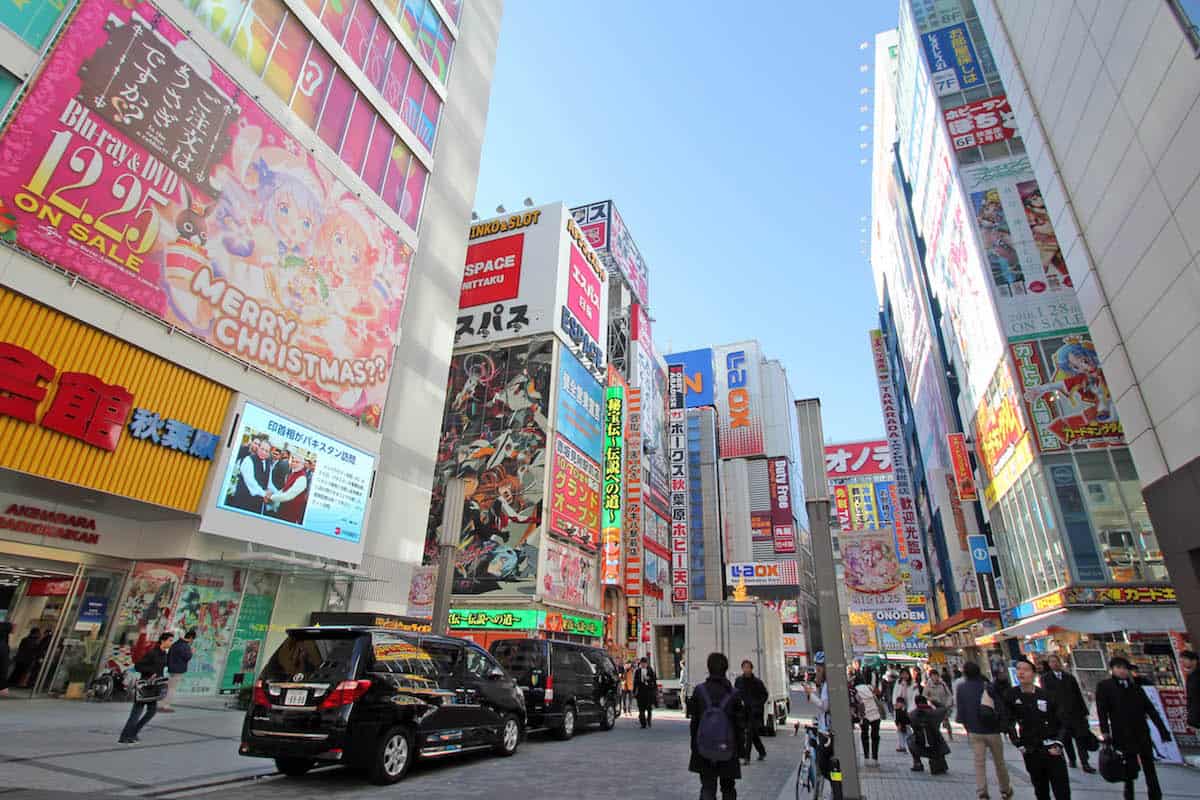
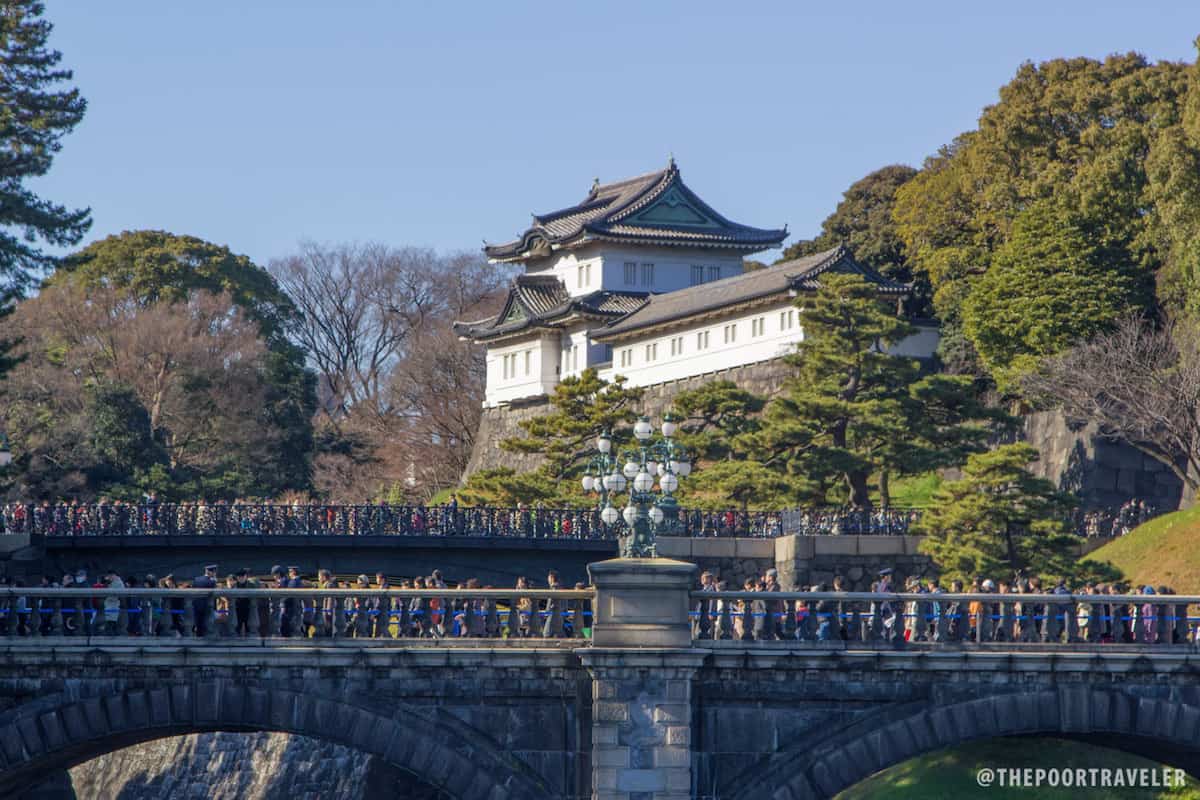
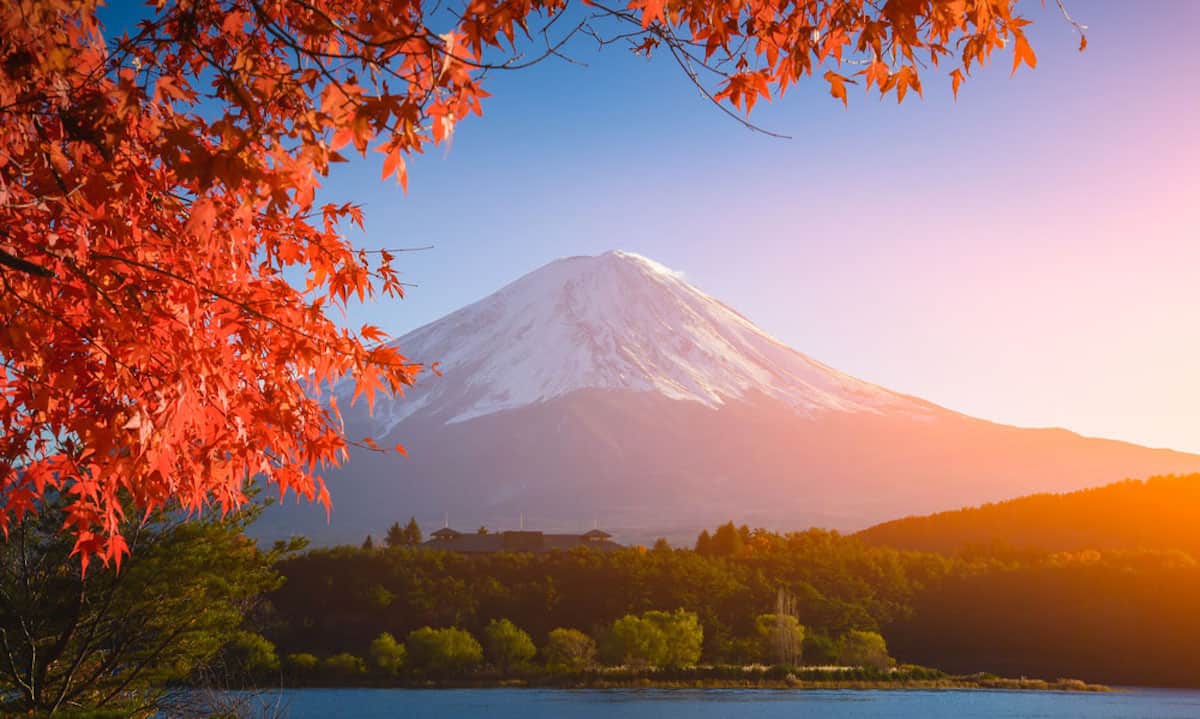
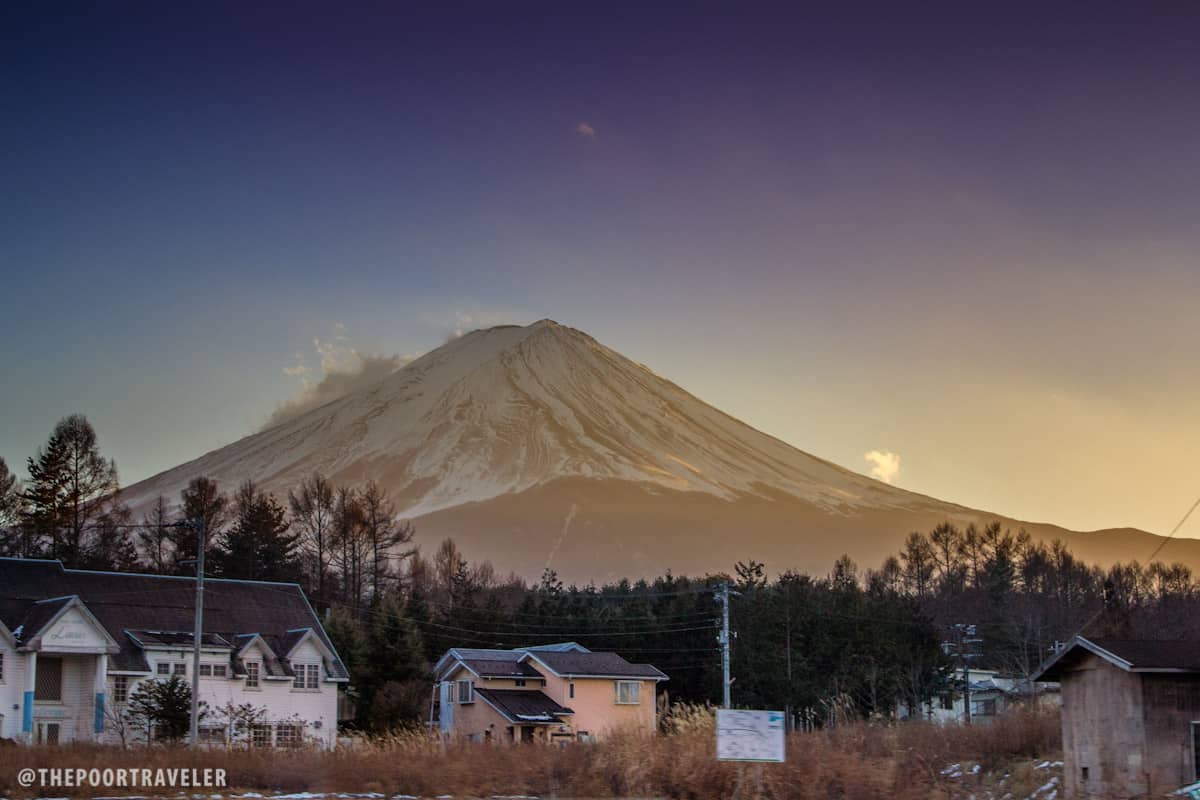
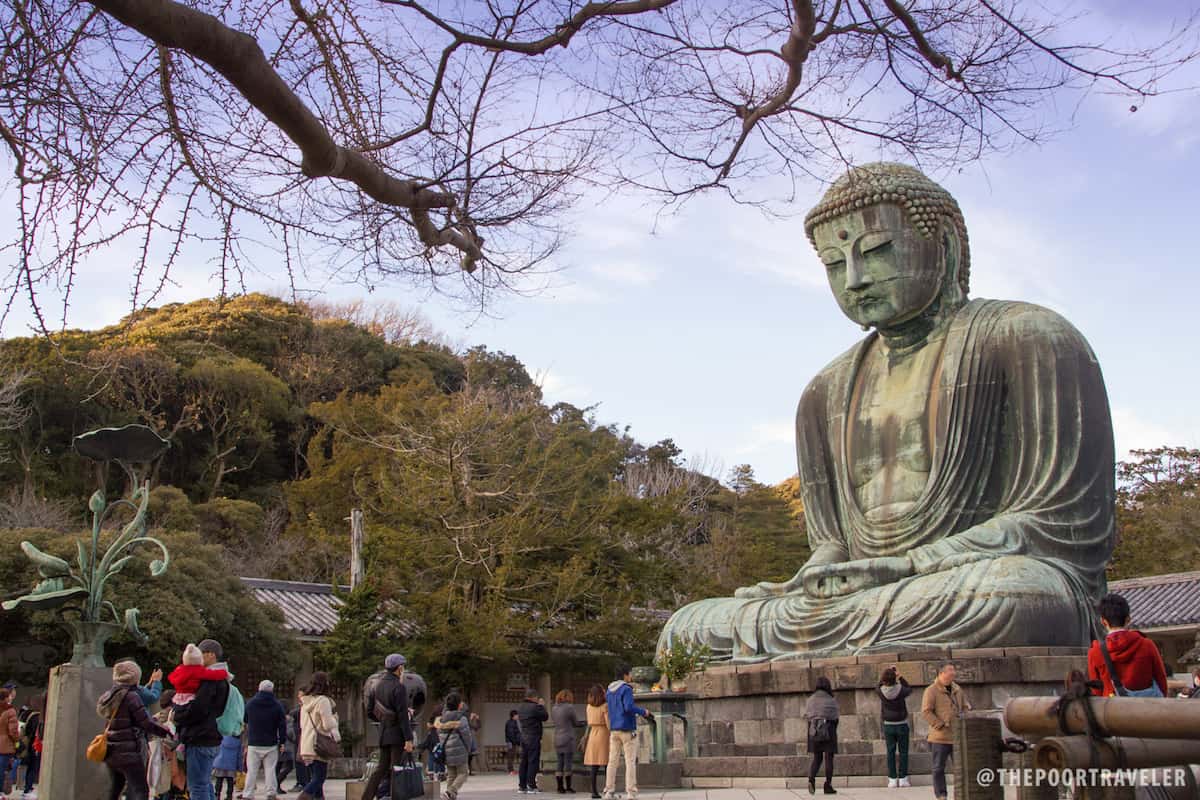
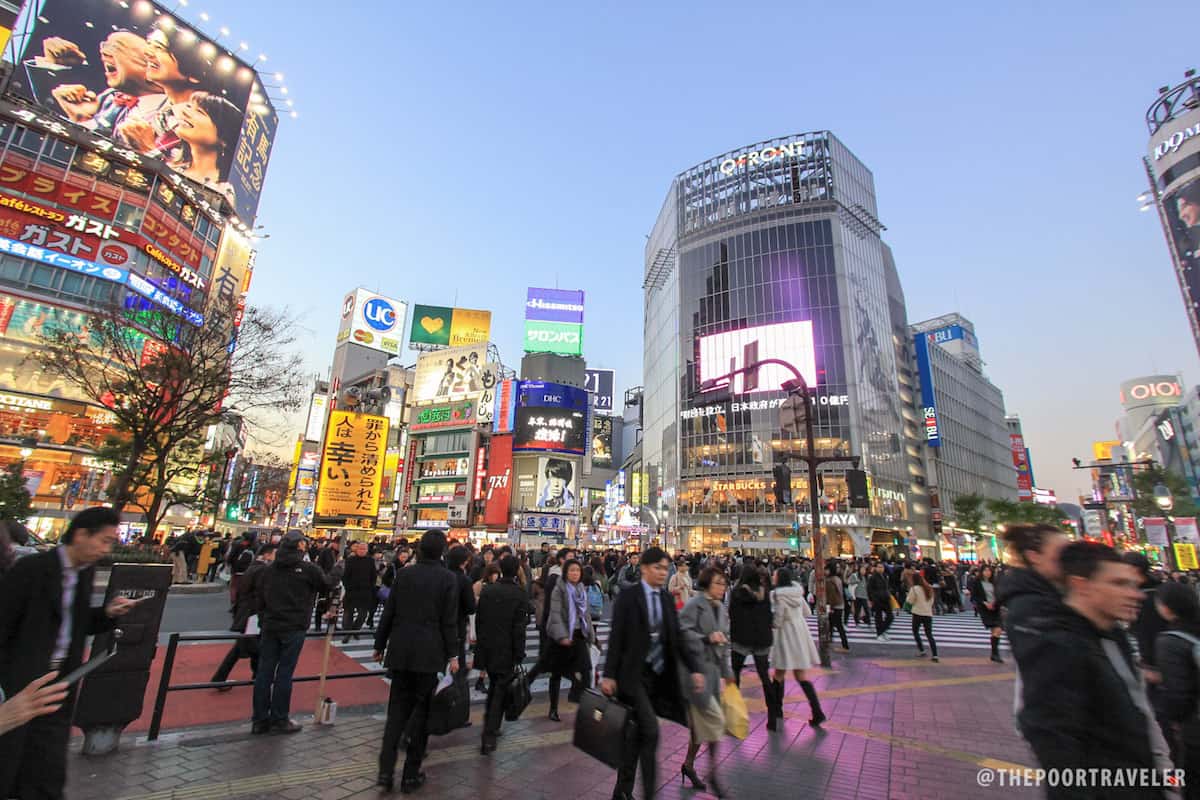
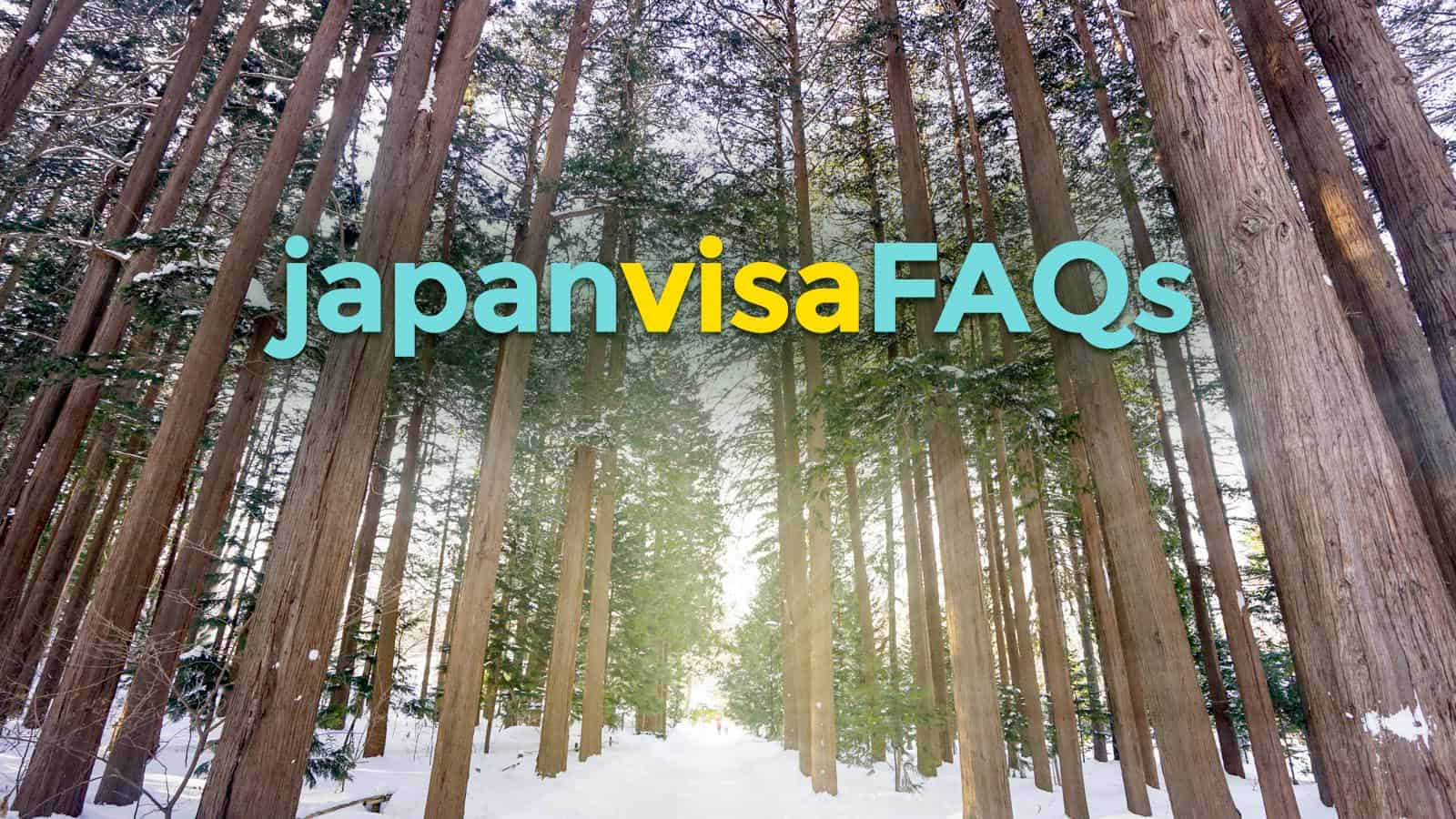
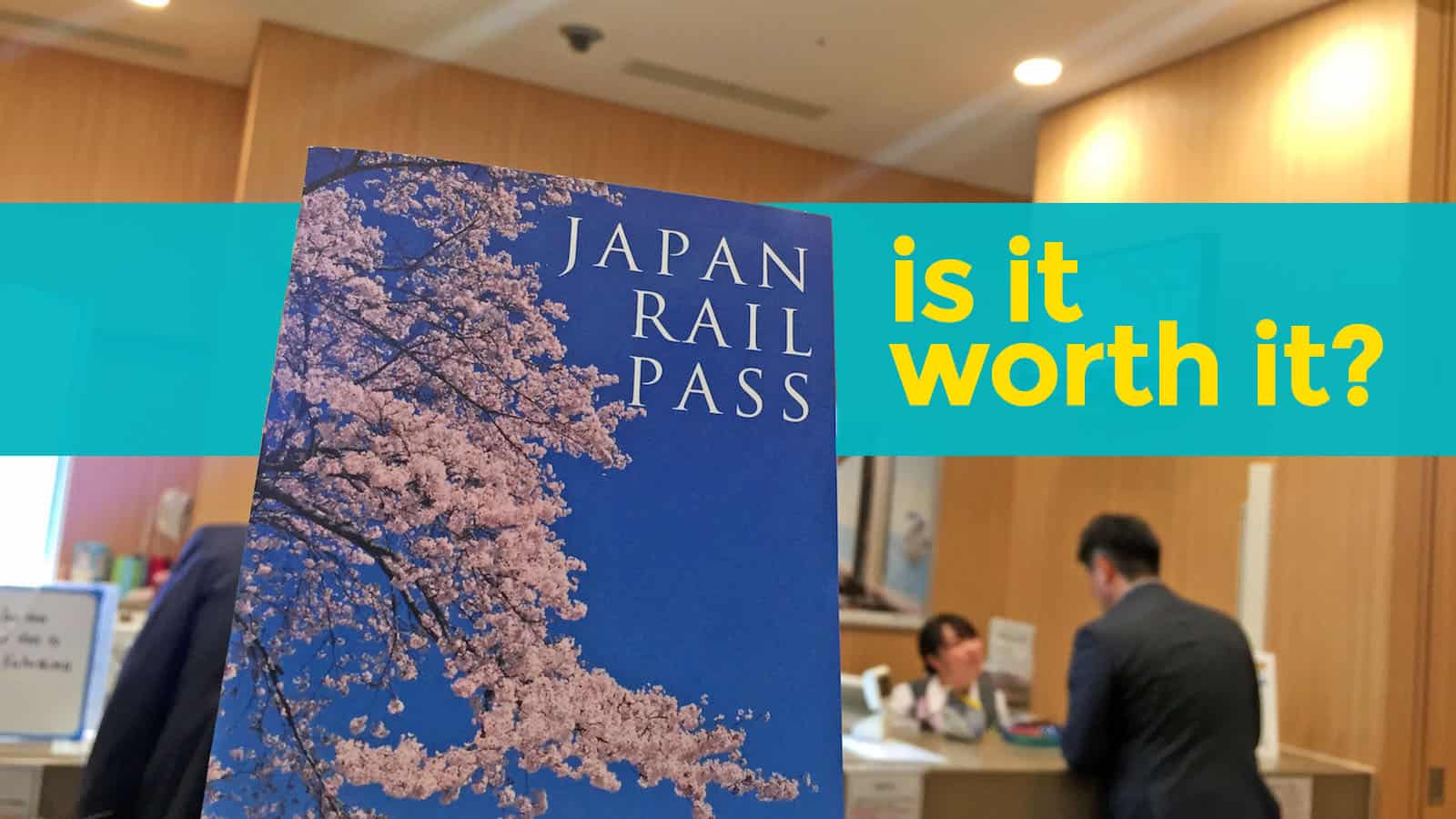
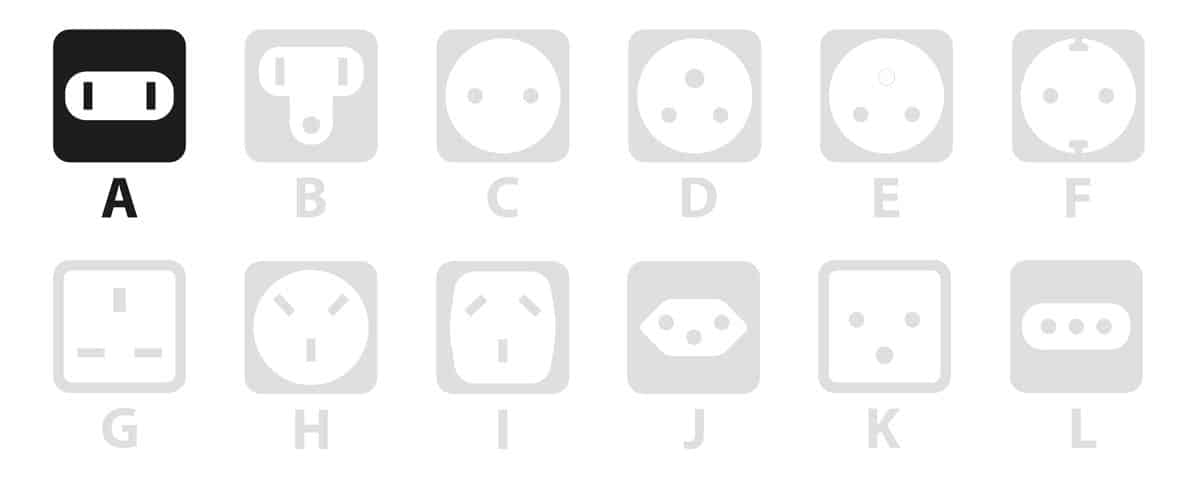




















Thanks for the this! :) Will use this in my future travel!
Thanks for reading! :D
Really??? with less than Php 25,000 you can travel around tokyo? I never expect it to be this affordable. this is so helpful. Thanks for the tip. :)
Great post Yoshke! You’ve given great detail to almost anything I can think of any traveller would need. Plus your pictures are gorgeous.
Thanks, John!
Appreciate your information, we plan only to visit Tokyo Disneyland, and a bit of tokyo, plan to be in Tokyo Disneyland on a Sunday, will it be good to arrive Friday or Saturday and leave on Monday? Would you suggest a good itinerary and cheap and reasonable expenses to go with? thank you so much
Very informative thanks for sharing!
Great post and with detailed itinerary within budget!
Can I ask what is the recommended itinerary for senior persons first time travelers?
Thanks!
Hi Bing! If you have seniors traveling with you, I’d suggest you pick a hotel near Yamanote line and just visit attractions along Yamanote (Akihabara, Sugamo, Ueno, Shibuya, Harajuku, Yoyogi, Shinjuku), although I would probably just insert a visit to Disneyland too haha.
Thanks very much Yoshke! Yes will definitely recommend the senior couple the theme park , and they will only go as a couple as what they wanted :)
Have read your blogs and the Ueno area is the most appropriate area for you to stay. May i ask … sorry have many questions though …
1.) When i tried checking the Hyperdia site , when entering the Ueno there are choices of = Ueno , Ueno-Hirokojii, Ueno-Okachimachi.. which one to choose?
2.) Should they buy Tourist Train Pass or per ride ticket is for the suggested attractions that you mentioned?
3.) Are there decent hotels in Ueno area in their front desk that can offer tours or day tours for the couple also? as they are not that techie in searching places via smartphones?
4.) Would you recommend the Smart travel wifi? I have seen ads they started the service for traveller, for the couple to use :)
5.) Can you recommend few cheap and decent hotels in Ueno? , the couple plans to stay for 4 days
6.) Are there cheap shops in areas that is for pasalubong and good stuffs to buy? :)
Thanks again :)
Hi Bing!
1.) When i tried checking the Hyperdia site , when entering the Ueno there are choices of = Ueno , Ueno-Hirokojii, Ueno-Okachimachi.. which one to choose?
— Ueno. Ueno only. :)
2.) Should they buy Tourist Train Pass or per ride ticket is for the suggested attractions that you mentioned?
—- If you’re referring to the Tokyo Free Kippu (Tokyo Tour Ticket), no. Hehe.
3.) Are there decent hotels in Ueno area in their front desk that can offer tours or day tours for the couple also? as they are not that techie in searching places via smartphones?
— Hmmm, I’m not sure, I never asked any reception because I always traveled DIY. What I can tell you though is that you can book tours online as early as now. Just make sure HOTEL PICKUP is included.
4.) Would you recommend the Smart travel wifi? I have seen ads they started the service for traveller, for the couple to use :)
—- We haven’t tried that yet. :(
5.) Can you recommend few cheap and decent hotels in Ueno? , the couple plans to stay for 4 days
—– I love staying at Hotel MYSTAYS Ueno East because it’s clean, cheap, and not too far from the train station. (There’s still a bit of walking involved, though.) If they’re fully booked, there’s another Hotel Mystays branch in an adjacent street, just a block away. Here’s Hotel MYSTAYS Ueno East: https://www.agoda.com/partners/partnersearch.aspx?cid=1771694&pcs=1&hid=926801
6.) Are there cheap shops in areas that is for pasalubong and good stuffs to buy? :)
— Yep, Takeya is also in Ueno. They sell discounted chocolates and other products at a discounted rate. And if they spend more than 5000 yen, they can opt with tax-free. May mga katabi ring ibang similar stores ang Takeya. Takeya lang yung natatandaan ko na name right now. It’s located here: https://www.google.com/maps/place/%E5%A4%9A%E6%85%B6%E5%B1%8BTAKEYA.CO.,LTD/@35.707338,139.7744132,17z/data=!3m1!4b1!4m5!3m4!1s0x60188ea1bfbdcdb9:0x88d64d6002df7d48!8m2!3d35.707338!4d139.7766072
Thanks again :)
Hi Yoshke thanks much for answering all questions !
The couple is now more excited if the trip will push through this coming december :)
And i told them the apps you recommended for them to familiarize before going.
More blessings to you guys for having a great blog ! :)
Bing
Do you recommend buying disnet tickets from Klook? Thanx
Hi Kristianne! Yep, we discussed exploring Disneyland using a Klook ticket here: http://www.thepoortraveler.net/2017/05/tokyo-disney-resort-travel-guide-tips/
Hi! Just want to ask if you bought a ticket first then to follow na lang yung visa? ok lang ba yun?
Hi Hannah! Ideally, dapat mauna yung visa para if madeny, hindi sayang. But if you’re confident you’re in good standing (has a full-time job, may funds sa bank, etc.), oks lang if mauna ung ticket. Pero syempre may risk yun pa rin. :)
Thanks for your blog my planning was made 100x easier.
I’m planning to just copy one of your suggested itineraries, since we’re also staying 5 nights, 6 days, but was wondering if we can go to Mt. Fuji instead of the Yokohama destination. Would you recommend that too?
Thanks a lot!
Yep, that’s cool too. :)
This is really cool. I’m planning to insert mt. Fuji in the itinerary but I just wonder if you ever had blogged or discussed abouth going there? How-to and how-much, i mean.
This blog made me feel more confident to explore Tokyo! So friendly and budget-wise. Thank you!
Thank heavens for a blog like yours, Yoshke! Leaving for Tokyo this Friday, took note of your suggested itineraries and if weather permits we’ll do it all, plus a trip to Mt Fuji :)
I learned alot in reading this guide. Thank you sir for this detailed guide.
No prob!
Hi! I think i need help haha! Im planning to go to Japan in December and I might book a flight from Manila to Nagoya, my problem is, i need to meet someone at Haneda airport and i dont know how am i going to get there (the cheapest way possible). Im thinking about taking the bus but im not sure if there’s a bus station outside nagoya airport or i need to ride a train first or if the bus will drop me at haneda airport it will be my first time in Japan and I’ll be traveling alone from manila to nagoya thats why im so nervous
Hi Eds, I’m afraid we don’t know the answer to this. :(
Hi, What will I search in Klook if i want to buy the JR Yamanote line pass?
Thanks
Would you know if the 4G Wifi rental can be picked up at Kansai and returned at Narita?
Hi! If I already purchased a JR Pass. is it advisable to still purchase an IC card or ICOCA card for Osaka to ride the trains? Because there are local trains that are not JR lines. Same with Tokyo, do I need to purchase SUICA? Please enlighten me. We’re leaving soon! Thank you!
It really depends on your itinerary. if your itinerary involves a lot of destinations near subway lines, then yes. SUICA and ICOCA are both refundable too.
Hello! We are going to Tokyo end of May- first week of June. I was thinking of going to Hakone or Lake Kawaguchiko but I’m afraid that we may not see Mt. Fuji. Is it advisable to try to go and try our luck (a lot of it?) Thank you very much again for all that you do.
Hi Laarni. Just check the weather forecast. Pero usually, kita ang Mt. Fuji kapag morning and late afternoon. Kapag around noon, maulap.
Eitherway, I would still recommend going to Lake Kawaguchi kasi maganda ung lugar with or without Mt. Fuji. :)
Hello po. Magkano budget need pag mga 10 days in Tokyo japan for 2 people?
Hello! Your blog is super helpful though I’m still confuse sorry, what train tickets do you recommend I buy. I will be staying only for 4 days and plan to go to maybe the top 10 destinations in Tokyo only? Also staying near Shinjuku station. Thanks in advance :)
Depends on your itinerary. I don’t know what you mean by top 10 destinations.
But most likely, the Tokyo Subway Ticket. https://affiliate.klook.com/jump/activity/1552-metro-ticket-tokyo/?adid=4976&af_wid=825
Hi there Yoshke. Ok b ang suica card if um planning to travel in ueno, shibuya, asakusa ung loop ng yamanote loop.
Thanks alot
Hi Bhe, yep, okay lang yung Suicard kasi di naman sya pass talaga. It’s just a stored value card that will make your train travel easier. :)
Hi Yoshke, planning to go to Tokyo fro 4 days come November (2nd week). Is it wise to use Pasmo card if 1 day will be spent in Hitachi Seaside Park, 1 day Mt. Fuji Tour (book through klook), 1 day disneysea, and the last day just shopping around Tokyo and Shinjuku Gyoenmae? Thanks.
Hi Mei, PASMO isn’t a pass. It’s simply a pre-purchased stored value ticket. So no savings there.
If you really want to save and you want to see Hitachi Seaside Park, drop the Klook tour and visit Mt. Fuji DIY style. Then purchase the Tokyo Wide Pass, which covers both sites and the two airports for 10,000 yen. The only catch is, the pass is valid for 3 consecutive days. This means you need to rearrange the itinerary and visit farther destinations (Hitachi, Mt. Fuji, and Disneyland) within 3 days.
Thanks for the reply Yoshke. Will take your advice. Can you please lead me to the link of the DIY to Mt. Fuji. Thanks.
Hi Mei, we haven’t written about it in detail yet, haha.
Hi sir. Im a first-timer sa japan om an 8-day solo trip..inquire ko lang. I have an 8 day trip in japan.. osaka-kyoto-tokyo ang plano ko po.
3 days in osaka 1 day in kyoto and 4 days in tokyo.
Mostly city sightseeing lang po gagawin ko. And sa tokyo po option 3 ng itinerary nyo ung halos kapareho ng akin but naka-base ako sa asakusa. Do you think a combination of ICOCA and tokyo subway metro is the best option for transpo. Pag sa unli ticket ng subway, okay po ba ang 72 hour ticket? Or 2 days unli ticket will do? Dahil pabalik nko s 4th day ko po via narita airport naman.
Would highly appreciate your advise po dahil hindi biro mahgawa ng itinerary for japan Thank you.
Hi Cha, I don’t think okay sayo yung subway ticket kasi mukhang mas magagamit mo yung JR lines.
I understand. So stick na lang po ako sa ICOCA. Pwede naman kung sakali ang ICOCA sa tokyo di po ba. Maraming salamat po at naliwanagan ako
yes po, gumagana yung ICOCA sa Tokyo. :)
Salamat sir ng marami
Hi! Please help me choose
Odaiba or Tokyo Tower
sa first night namin, bali mga 4pm pa kami aalis sa hotel Thanks po
Hi Ralph, ang hirap naman. Haha.
Ang maganda sa Tokyo Tower, malapit lang sya sa Roponggi so marami pa kayong ibang pwedeng puntahan before or after.
Yung Odaiba naman, medyo malayo pa. So mas pipiliin ko siguro ung Tokyo Tower area kung limited ang time.
Hi! Salamat po sa answer. BTW, safe po ba sa Roppongi? Heard a lot of stories na madami daw touts dun kaya medyo di ako sure about going there
Wala naman akong naexperience na panget when I was there. Just be cautious na lang din as always. :)
Hi, thank you for all the info. Your blog is really helpful. Been actually checking this since i was able to get a piso fare last dec2017 and yes finally our much awaited trip will be next month, hurray for that! But i need help, can you please advise if we need a subway pass or the kippu pass or just buy the stored value? Will be around asakusa, akiba, shinjuku, shibuya, imperial palace on day 1. Day 2 need to be in shinjuku for mt fuji tour, day3 on disneysea. Will be staying in nipori. Thank you so much!
I don’t think you need any pass. Just stick to SUICA/PASMO.
If you want to be sure, go to the Hyperdia website, enter your destinations/stations and compute yourself. If the total cost is lower than the price of the pass, then you don’t need that pass.
Thank you for the advice!
Hi! What’s the best way to get Yen? I have both PHP and USD and I don’t know what option gives the best rates. Did you exchange money in the Philippines or at Japan?
Hi Shen, I usually exchange money in the Philippines. Peso to yen.
Sometimes, we withdraw yen from ATM.
Hi Yoshke! San po pwede ma experience ang snow near tokyo? around end of Dec?
December snow is rare in Tokyo, but it has happened before. I once experienced snow in Tokyo in November. But generally, January is the best bet for first snow.
You can go to Yamanashi prefecture. If you want to experience snow activities, you can visit Fujiten Snow Resort at the base of Mt. Fuji, near Lake Kawaguchi. I have tried it before and it’s great for snow newbies. The view of Mt. Fuji from the resort is also unforgettable.
How about in Gala Yuzawa? it is safe to go there with kid?
Hi! We haven’t been there pero it’s a snow resort so siguro naman.
Hi! Your blog is very helpful. We are going there this December and staying near the Shinjuku area, would you know of any Catholic church that has an English mass near that area?
Thanks!
Not sure if they have English mass, but check out St. Ignatius Church, just a short ride from Shinjuku.
From Shinjuku Station, just take JR Line to Yotsuya Station.
Hi! Is it advisable to go by Train to Kawaguchiko lake from Tokyo
and ride a taxi going to Fujiten Ski resort? Is it hard to get a taxi ni kawaguchiko?
Hi Mc, what I did was take the bus to Kawaguchiko and then taxi to Fujiten. I think train is okay too.
In Kawaguchiko, it’s easy to find a cab that will take you to Fujiten. It’s just so darn expensive. Haha
hi, may i know how to get back to Narita from Ueno? my flight will be at 10 in the morning , so i have to take the train before the rush hour (maybe around 6.30 am) and i plan to buy the skyliner ticket online but i’m confuse if thats able to redeem the ticket the day before my flight day? i read in some article that i have to exchange the e-voucher in harajuku and ueno, is that correct?
Just go to Keisei-Ueno Station. You can take either the Skyliner or Limited Express. Just buy the ticket at the station so no need to redeem. :)
Hi Yoshke! We will be in Tokyo for 8 days after Christmas until Jan. 2. Travelling with 2 teenagers. Would you know of any New Year’s Countdown celebration in Tokyo? How about in Yokohama? We are planning to go there for the fireworks but not sure of train schedules.
Hi Cathysis, I don’t know anything about fireworks, but most locals go to the temple on New Year’s Eve for “hatsumode”. Meiji Shrine in particular seems to be popular.
Reading this help me to plan our upcoming trip. Thank you so much.
Would you know if tokyo wide pass cover hitachi seaside, ashikaga flower park and mt fuji areas?
thanks again
Hitachi Seaside and Mt Fuji, yes. I can’t remember if Ashikaga is covered.
Hi there,
Thank you for the helpful post. Quick question, is shopping at Gotemba worth it. Also, do kids below 1 year old have to pay for trains or subways? thanks again and all the best.
Greg
Hi Greg,
Re Gotemba, personally, I don’t really enjoy shopping stops, haha, so it’s not for me.
Kids below 1 year can use the train/subway for free unless they occupy a reserved seat. Otherwise, free of charge.
Hi po, I’m planning to visit Tokyo next January but I’m still ambivalent if I should purchase a roundtrip ticket right now (because idk if it’s still too expensive lol). Any tips on when should I purchase a roundtrip ticket to get the cheapest rate if I want to go to Tokyo in January? Also how will I know if sulit na or okay na ang price ng roundtrip ticket for January? How much po usually ang average or cheapest rate for January? Thanks po. :)
Hi Hope, both Philippine Airlines and Cebu Pacific will have a major seat sale on March 1. Try mo book on that date, at midnight! :)
Really very gud collection What a fantastically useful list. Thank you so much
Thanks!
Nice post thanks for sharing
No prob! And thanks for visiting our blog.
Hello may I ask po regarding sim card? :) pwede po ba hotspot un? Isa lang bibilin. Dalawa lang po kasi kami nung friend ko mag travel. Parang un po ung cheapest option.
Hi Dianne, ang alam ko pwede po.
Thank you po! Sobrang dami ko po natutunan sa blogs niyo. As in kayo ung japan bible ko. Hahaha. Sana maging successful po ang trip namin ng friend ko. ❤️ Thanks for everything ❤️ Saan kami pupulutin kung wala kayoooo ❤️
Salamat po! :)
Hello. I’ll be in Tokyo for 8 days and I’m planning to get a Tokyo subway Ticket pass. Can I buy 3 x 48hr passes in advance? Or do I need to buy everytime a 48hr pass expires? Thanks
Hi Kitty, you don’t have to use a pass for the entire duration of the trip. Use it only on days when you feel like you’re taking a lot of subway rides. Otherwise, just buy single tickets.
Hi! How will we know what stations will the Express/Rapid train stops?
Hi. This blog is very informative. We are planning a trip to Japan this November 2019. My question is…can we change the port of entry to go to Japan from Narita to Haneda? In our Japan tourist visa application form, we stated NRT but I am seeing that the plane fare is cheaper if we fly to Haneda airport plus it is near the Tokyo area. I appreciate your help.
Hi Annie, as far as I know, it’s okay.
I usually check Wikipedia lang.
Hi,
I plan to visit Tokyo and go to Ashikaga flower park.
I read about Tokyo free kippu (Tokyo combination ticket).
Is this ticket valid for my trip from HAneda airport to Ashiakgashi?
Can I buy the ticket in HAneda airport?
Thank you.
Hi Iin, you will need a Tokyo WIDE Pass for that, not the free Kippu.
Thanks for a everything
No prob!
Do you recommend going to teamlab borderless?
Hi Froglet, we haven’t tried teamLab Borderless, but we’ve been to teamLab Planets and we loved it!!! ❤️
When will you have the HOW TO GET TO HANEDA AIRPORT TO TOKYO CITY CENTER ?
this blog is super detailed and very informative! kudos to you for making this. i am planning to go to Japan this December. Hopefully i can go to Tokyo and experience what it has to offer. :) Thanks for sharing this!
cha @ littlemisadvencha.com
Thanks!
Many thanks for the tips and infos! I enjoyed the reading from top to bottom.
Thank you! :)
Hi Guys how to buy disneysea ticket online? Tried klook link here but it says they dont have it in our languange
Hi, regarding the tokyo free kippu (1 day tokyo tour ticket). Is the validity of the ticket by time (24 hours, like if I buy it on 3 pm today, is it still valid til 3 pm tomorrow) or by date (will its validity expire by 12:00 AM tomorrow even if I bought it on 3 pm today)
nice
Hi po. In choosing accomodation, should we only consider those near train stations( jr yamanote line) like tokyo or shibuya train stations? Or pwede rin close to subways. Are subways part of the jr yamanote line? Thanks po. We are after kc close to public transport.
Hi Edna, ang subways ay di part ng Yamanote line. BUT check mo yung mga attractions that you want to visit. Baka most of them are near a subway line din (TOEI, Tokyo Metro). If oo, then okay na rin naman yung malapit sa subway station.
Actually, basta malapit ka sa train station, whether subway or JR line yan, you should be fine. Mas preferred ko lang talaga ung malapit sa JR Yamanote line kung ung main attractions ang ivivisit. Pero di sya deal-breaker for me. If may gusto kang hotel/apartment sa city center na malayo sa Yamanote pero malapit sa subway, worth considering pa rin un for me.
Thanks. Are they intervonnected though? We can ride subway then change train to yamanote line? Expensive kc nakikita ko pg near U Yamanote line.
Hi Edna,
Yes, interconnected naman sila. May interchange sa big stations like Ueno and Shinjuku.
Don’t gravitate too much sa Yamanote line if mahal. Basta within city center and you’re near a station, you should be fine.
Thanks so much for answering my questions. Last na po. Mas ok ba mag klook Hakone tour to see Mt Fuji or mg train n lng po kmi? Is hakone the best option to see mt fuji? Salamat in advance
Great post!! Thank you very much for sharing.
Hi! Where do you exchange your php to yen? Is it better if sa Bank or sa Money Changer? or sa NAIA?
I live in Kenya but I have always wanted to visit Tokyo and experience the technology advancement there. Being a web designer myself, I know they are way ahead of us in online business marketing. I welcome all Japanese people to Kenya.
I love your blogs! I discovered it the first time I went to Japan last year and have been going back to reread it for tips for future travels, and just because it’s so fun to read them! Hope we can travel again soon because I’m excited to apply the things I’ve learned. Stay safe! :)
Thanks, Meagan! Yes, hopefully we all get to travel soon! :)
That’s such an elaborative guide to Tokyo. Loved it. I am definitely referring it when I visit Tokyo.
I am arriving 12 midnight weekday January 12 2023 from Hameda Terminal 3…. is there airport transfer to bring me to Shibuya around this early morning time I only see airport transfers from Narita…Thank you
What place would you suggest to enjoy autumn view near tokyo? We are only stating for 5 days
loads of infos! thank you!